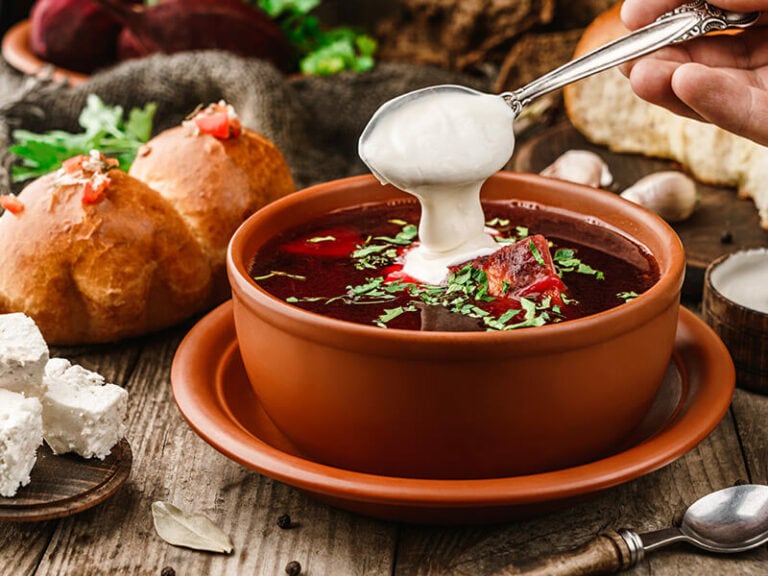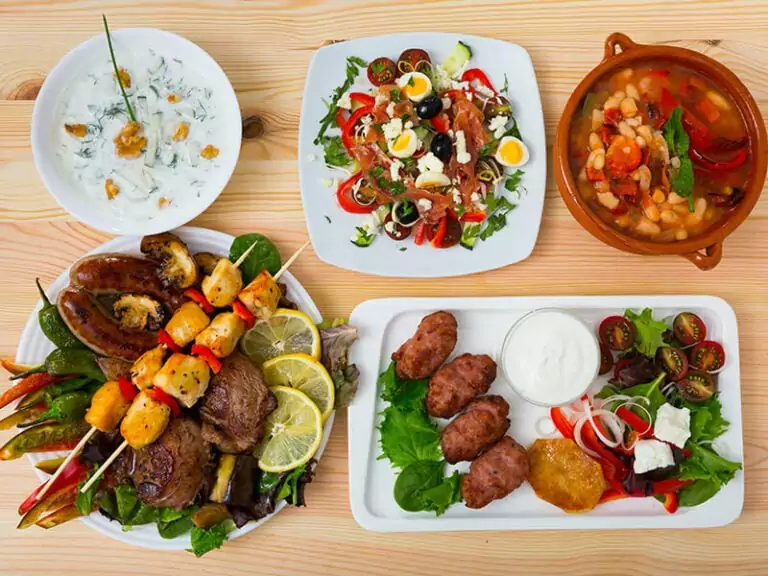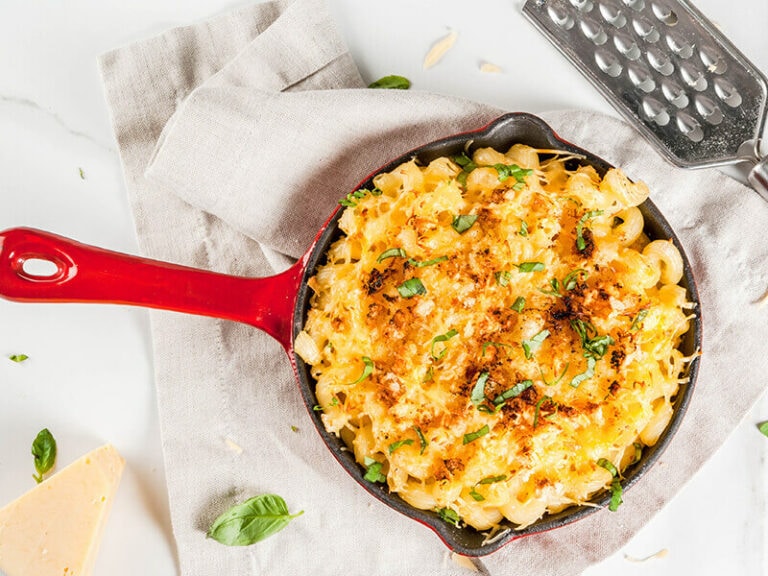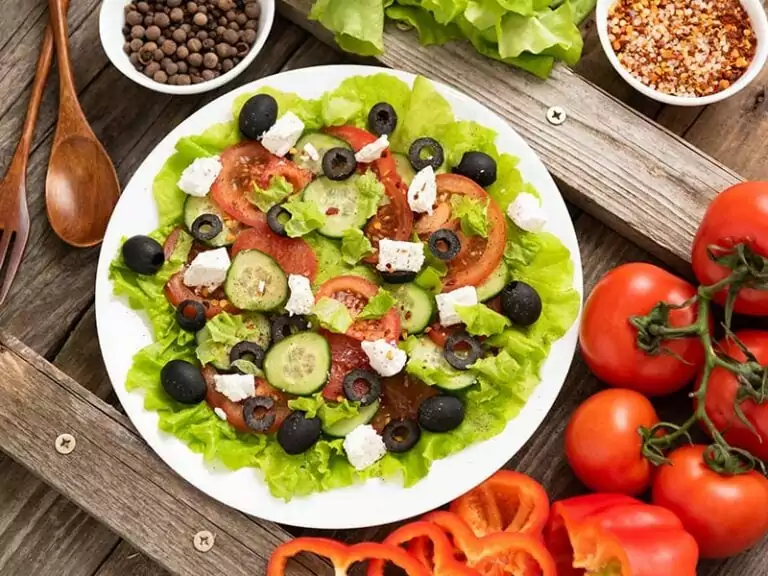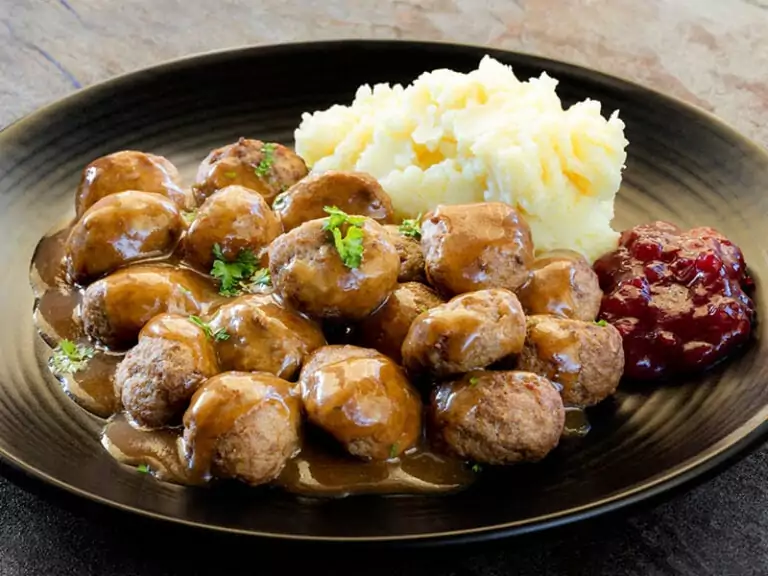Ever thought about European fruits as more than just food? I invite you to join me in unraveling their extraordinary world. This article will provide you with the unique histories of these fruits, their health benefits, and other interesting facts.
This knowledge won’t only widen your culinary horizons, but it’ll also assist you in making healthier, more environmentally conscious choices. So, ready to add a dash of European treasures to your diet? Read on!
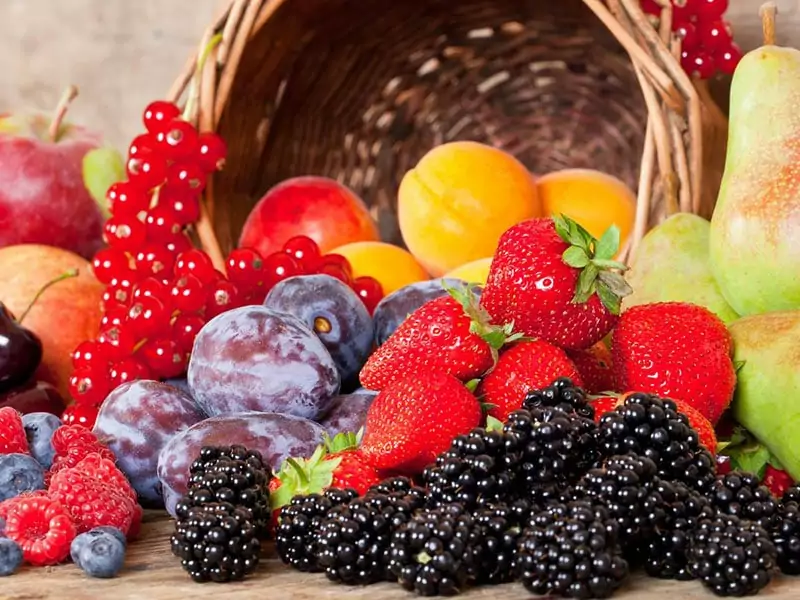
Regional Fruits and Their Cultural Significance in Europe
Northern Europe
In this region, apples are widely grown, especially in England, where they are used in various authentic dishes of Northern Europe like pies, strudels, and ciders.
The Scandinavian region, with its colder climate, is well-known for a variety of berries, including strawberries, raspberries, lingonberries, and cloudberries. The locals often use these berries in desserts, jams, and even savory dishes.
Southern Europe
Southern Europe, with its Mediterranean climate, is the perfect ground for citrus fruits. Spain and Italy are famous for their oranges, lemons, and tangerines.
On the other hand, Italy, Spain, and France are also known worldwide for their vineyards, with grapes used in producing wines, which are internationally acclaimed European drinks.
Olives, another iconic fruit of this region, are extensively cultivated in Greece (15% of the total EU area), Italy (23%), and Spain (55%) [1], contributing significantly to Southern European delicacies and the economy.
Eastern Europe
In Eastern Europe, Russia is renowned for its cherry cultivation, with cherries used in some Eastern Europe-based delights. This country is also one of the biggest cherry-exporting countries.
In addition, Romania is famous for its plum orchards. These plums often find their way into local spirits like Pálinka and Tuică.
Central Europe
Countries like Austria, Czech Republic, and Slovakia are known for their apple and pear cultivation, both used in culinary specialties of Central Europe.
Poland, known for its apple orchards, is one of the world’s largest apple exporters. Germany, also falling in this region, is well-known for its diverse varieties of apples used in cider-making.
Western Europe
In Western Europe, France stands out for its grape production, with vineyards spreading across regions like Bordeaux, Champagne, and Burgundy, producing some of the world’s most renowned wines.
These wines are excellent accompaniments to many classic Western European delicacies. Furthermore, Belgium, known for its pear cultivation, contributes significantly to the fruit market.
Cultural Significance And Traditions
Across this continent, fruits are central to many cultural celebrations and traditions. Numerous festivals and holidays are centered around fruit harvests, such as Apple Day in England, the Wine Harvest Festival in Spain, and the Cherry Festival in France.
Many traditional dishes across Europe feature regional fruits, such as the apple strudel in Austria, the Tarte Tatin in France, or the plum dumplings in Hungary. Moreover, fruits often play symbolic roles in folklore and cultural stories, embodying themes of fertility, prosperity, and life cycles.
Spain
1. Pera de Lleida (Pears of Lleida)
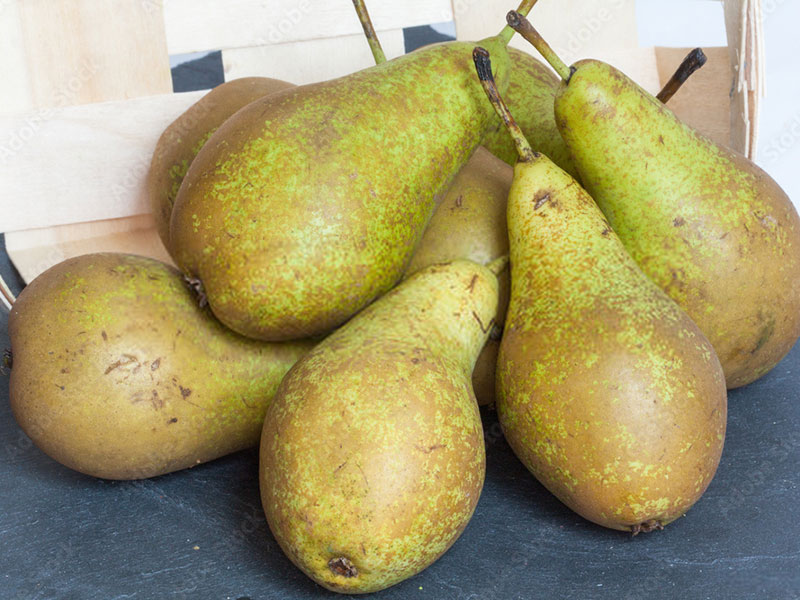
Pera de Lleida is a distinct pear variety cultivated exclusively in Lleida’s fertile plains. Every step, from growth to packaging, happens in this region, imbuing each pear with an authentic locality.
These Spanish fruits are a feast for the senses, their round shapes cloaked in hues ranging from light to bright yellow. Inside, their white flesh bursts with juice, releasing a gentle yet enticing aroma.
They are an embodiment of sweetness, owed to an outstanding balance of sugars and acids that enhances the natural sweetness.
2. Manzana Reineta del Bierzo (Apples of Bierzo Districts)
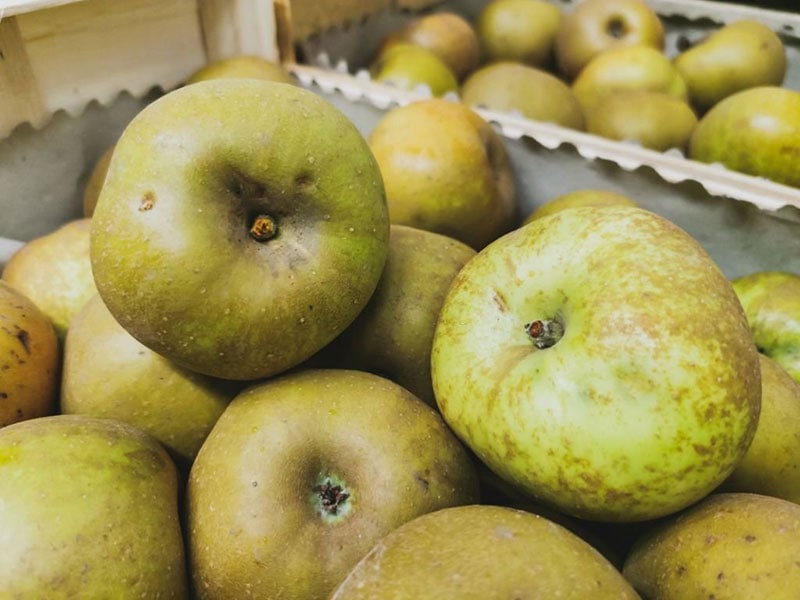
Manzana Reineta del Bierzo apples, with their Designation of Origin classification, are an enduring legacy from the 12th to 14th centuries. These apple varieties, Reineta Blanca, Reineta del Canada, and Reineta Gris, are all proudly cultivated in the Bierzo district in northeast Leon.
Each apple presents a peculiar dark green color, speckled with brown spots. Once bitten, their crunchy texture reveals intense acidity, balancing against their undeniable juiciness. The fragrance and aroma bear traces of grass, vanilla, and ripe fruits.
3. Manzana de Girona (Apples)
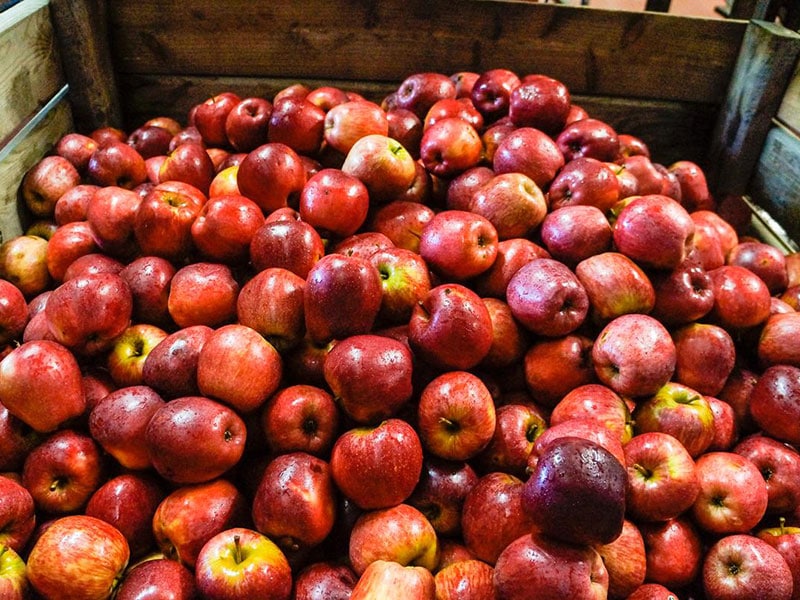
In the Girona province of Catalonia, nestled in Spain’s northeast corner, apple cultivation has been a significant trade since the 1300s. Known as “Manzana de Girona,” the region’s apple varieties are enticing and unique.
The Golden apple, harvested early in September, has a greenish-yellow skin and boasts a sweet, aromatic flavor. Its pulp is firm, crunchy, and juicy. Around the same time, you’ll see the Red Delicious apple, ranging from tangy to sweet, depending on its ripeness.
Moving forward to August, the Royal Gala apple, adorned in red and cream tones, is picked. It offers a sweet taste with a firm, juicy, and crunchy pulp, making it an excellent choice for salads or simply eating out of hand.
October calls for the Granny Smith apple. Its deep green color and white lenticels give it a distinctive appearance, and its acid taste is enchanting. Its pulp is compact, juicy, and full of flavor.
4. Granada Mollar de Elche (Pomegrenate)
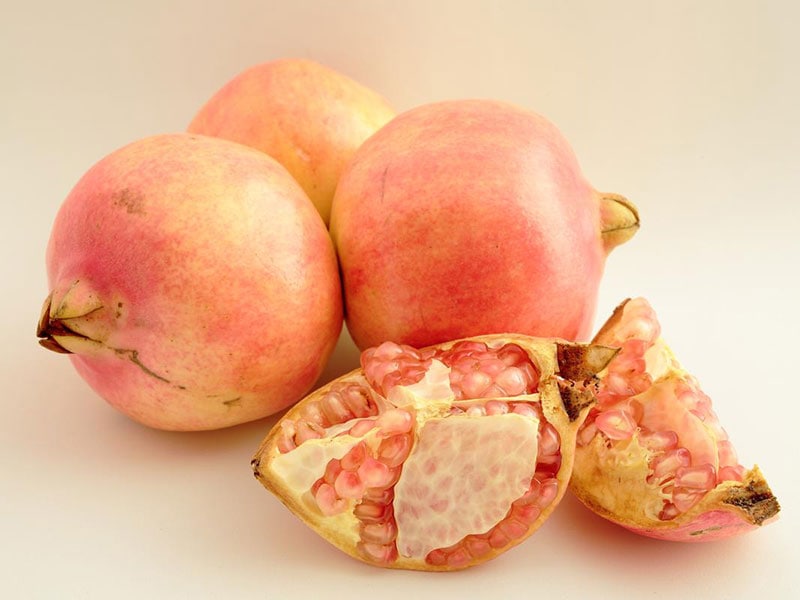
In the southeast of the Autonomous Community of Valencia, Alicante province, Granada Mollar de Elche pomegranates flourish. Their exterior color varies naturally, from cream to intense red.
Known for its sweetness and high anthocyanin content, this pomegranate variation showcases an intense color. This very pigment is an antioxidant, making these pomegranates a treasure trove of health benefits.
In addition to antioxidants, they’re chock-full of vitamins and minerals, earning the title of ‘superfruits.’ Another perk is their soft seeds. With 60% of its Spanish production destined for export, these pomegranates are savored across the globe.
To enjoy a pomegranate, start by scoring the skin around the equator of the fruit and gently pulling it apart into two halves. Then, hold each half over a bowl, seeds facing down, and tap the back with a spoon to release the juicy arils.
5. Cerezas de la Montaña de Alicante (Cherries from Alicante Mountain)
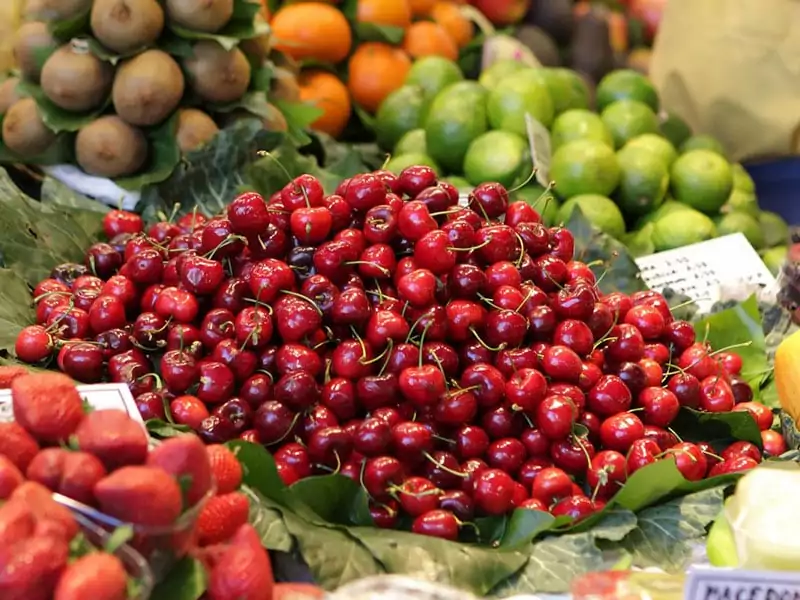
Hailing from the mountainous regions of Alicante in the Valencian Community, “Cerezas de la Montaña de Alicante” cherries are truly something special. Their journey in Spain began with the Romans, and since 1988, they’ve been safeguarded by a Protected Geographical Indication.
The Burlat, Picota Ambrunesa, Tilagua, Nadal, Planera, Picota varieties, grown in Alicante’s north and Valencia’s south, are remarkable for their sweetness, flavor, and deep red color.
Their crispness is charming, while their ‘extra’ and ‘primera’ categories, based on size, promise superior quality. To ensure the highest standards, farmers must hand-pick these cherries using traditional methods at the right ripeness.
6. Kaki Ribera del Xúquer (Persimmon from Valencia)
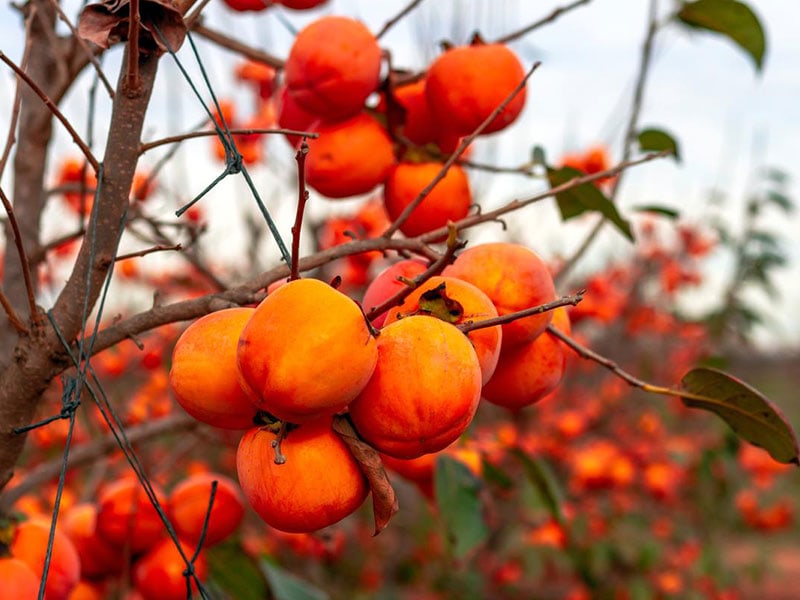
In the sunny landscapes of Valencia Province, Kaki Ribera del Xúquer persimmons are lovingly grown. Originating from the 19th century, these fruits are larger and more pointed than most.
These persimmons radiate a deep red hue and have a soft, seedless interior that’s easy to peel. Thanks to local cultivation techniques, any bitterness is completely absent, replaced with a very sweet, caramel-like flavor.
They can be plucked before full ripeness and sold with firm flesh. Their season spans from early October to late January, bringing sweetness into the cooler months.
To eat a persimmon, simply slice off the top and scoop out the sweet, jelly-like flesh with a spoon, discarding any seeds or skin as you enjoy the delectable flavor.
7. Melocotón de Calanda (Peaches)
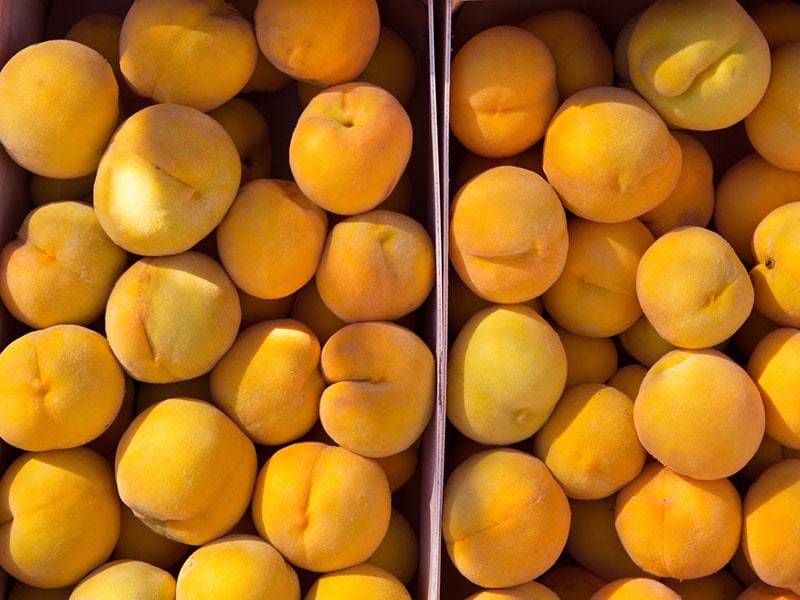
Melocotón de Calanda peaches are Aragón’s pride. Their large size and distinct sweetness had me hooked from the first bite.
These fruits, with their creamy orange hue, have been nurtured in Aragón since the 19th century. Handpicked at peak ripeness, they boast a succulent texture and fully developed flavor.
These peaches are bigger than any other peaches I’ve tasted, measuring over 73 mm in diameter. Each peach has a sticker with a logo and a traceability code, which proves its high quality.
8. Cítricos Valencianos (Valencia Citrus)
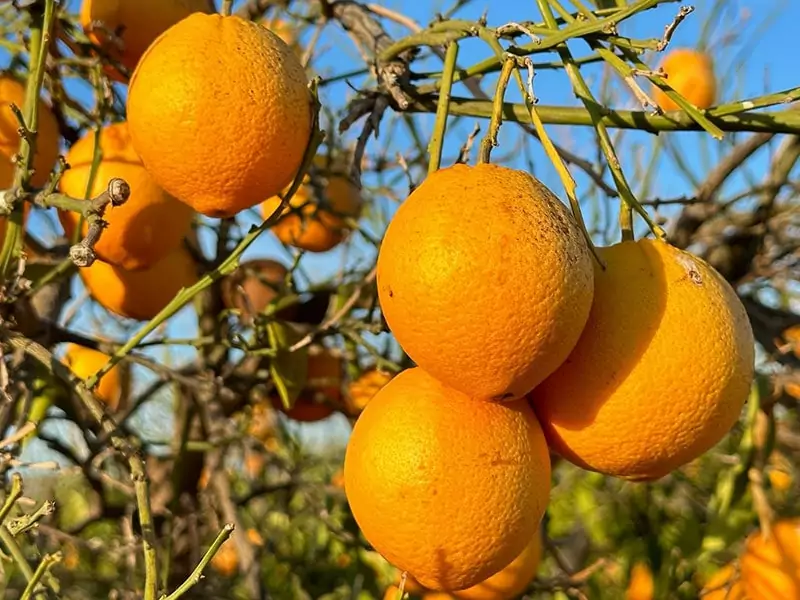
Cítricos Valencianos is an astounding range of citrus fruits from Valencia with a PGI tag. Their history is quite interesting, cultivated since the Muslim domination around the 11th century.
This citrus family features diverse groups such as Satsuma, Hybrid, Clementines, Navel, White, and Sanguine, each with multiple varieties. For example, the Satsuma group’s most notable cultivars include Clausellina, Okitsu, Owari, and Iwasaki.
I particularly enjoy the tangy zing of the Sanguinelli and the balanced sweetness of the Nova. Plus, they’re a fantastic source of vitamin C, so they’re as good for your immune system [2] as they taste.
9. Plátano de Canarias (Canary Islands Bananas)
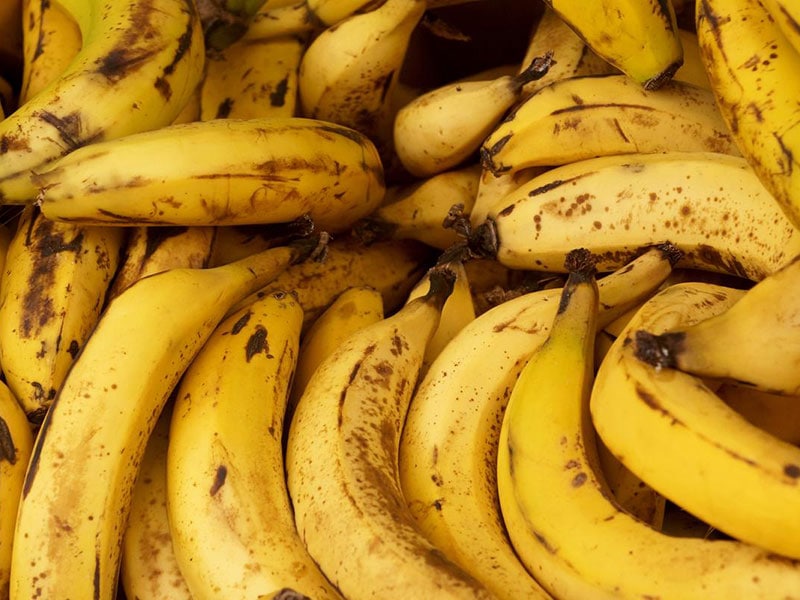
The Plátano de Canarias is more than just a banana. Grown in the Canary Islands, these fruits come with brown speckles on their vibrant yellow skin, signaling the high enzyme activity within that ripens the fruit faster.
Their sweetness is remarkable, a byproduct of high sugar and low starch content. However, only those with at least 5.5-inch length can be categorized with this name.
With high levels of potassium and phosphorus, they aid in bone and teeth formation [3] while containing less sodium and calcium than their counterparts.
France
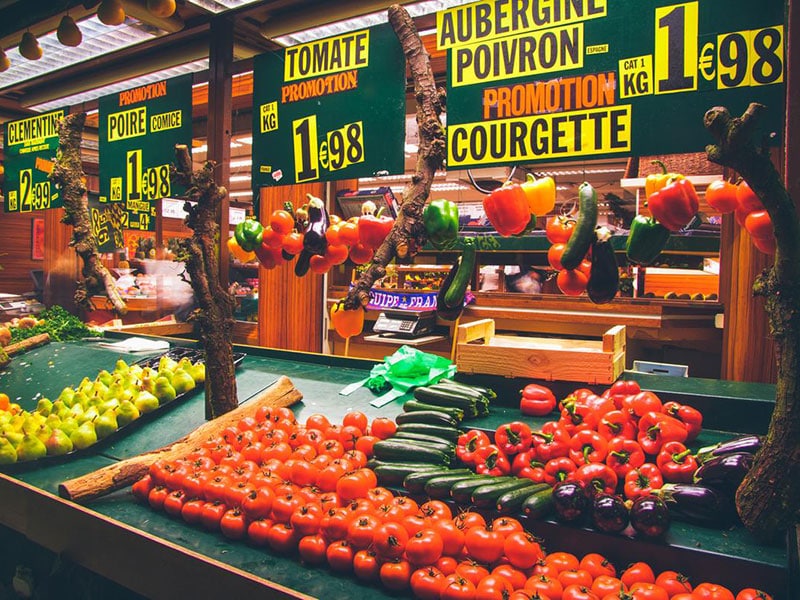
10. Juliet Apples
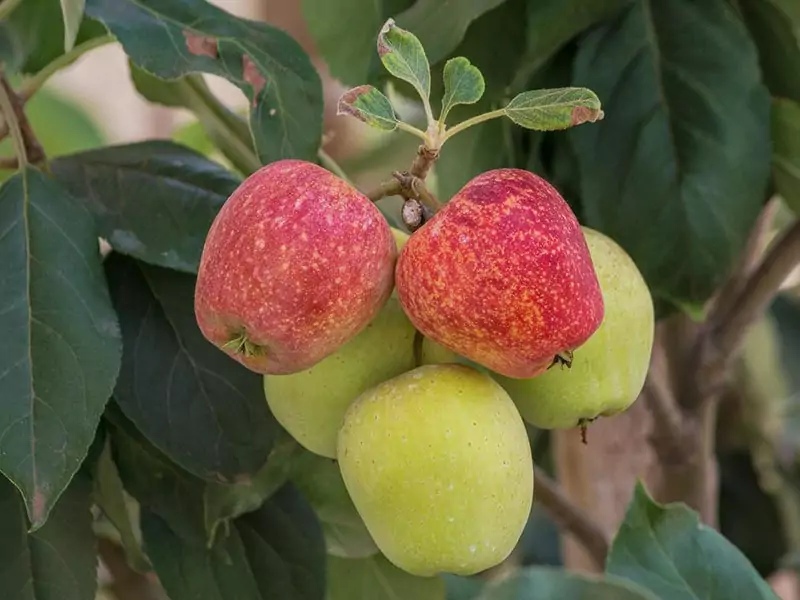
Speaking of authentic French fruits, Juliet apples are one of the best options. They are grown exclusively in France.
These apples have a lovely sight with their smooth, shiny red skin and contrasting yellow-green backdrop. Being a 90s debutant, these medium-sized apples have a juicy, crisp flesh, with flavors striking a balance between sweetness and acidity.
These apples are versatile, too, whether eaten fresh, cooked, baked, or pressed into juice. Coming in the fall and winter, their long shelf life means they’re shipped across the globe to North America, the Middle East, and Asia, all year round.
11. Chasselas de Moissac (White Grapes)
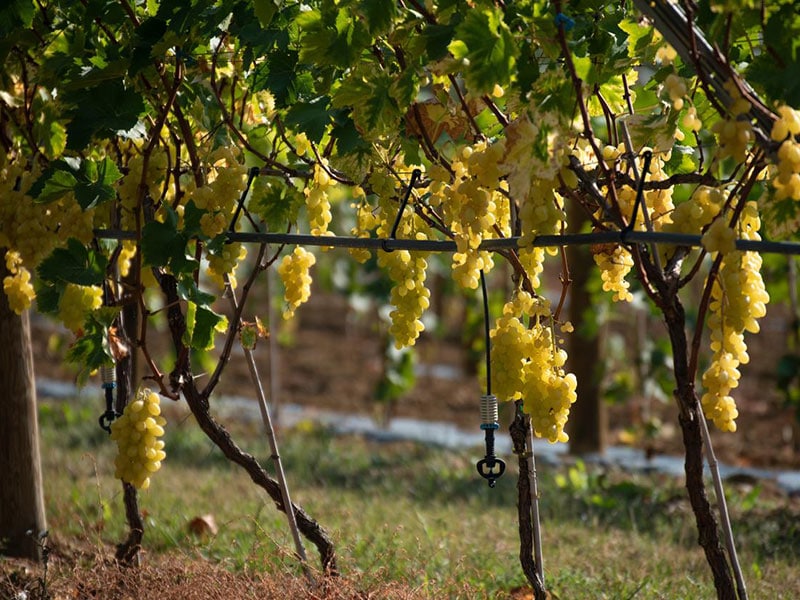
In the beautiful region of Bas Quercy, France, you can find an exceptional variety of grapes called Chasselas de Moissac. These white table grapes are quite the sight, golden pips and all, packed in long, well-shaped bunches with a juicy, translucent pulp.
What impressed me about these grapes was the way they flourished in sandy, silicone clay-rich soil, utterly lime-free and cultivated without fertilizing irrigation. If you have a taste for something refined, sweet, and fragrant, these grapes won’t disappoint.
Eating them in the jelly form with foie gras is a delicious choice. Or you can enjoy them as a dessert. Plus, their nutritional, medicinal, and detoxifying properties make them ideal for skin and facial care.
12. Guigne d’Annonay (Cherries)
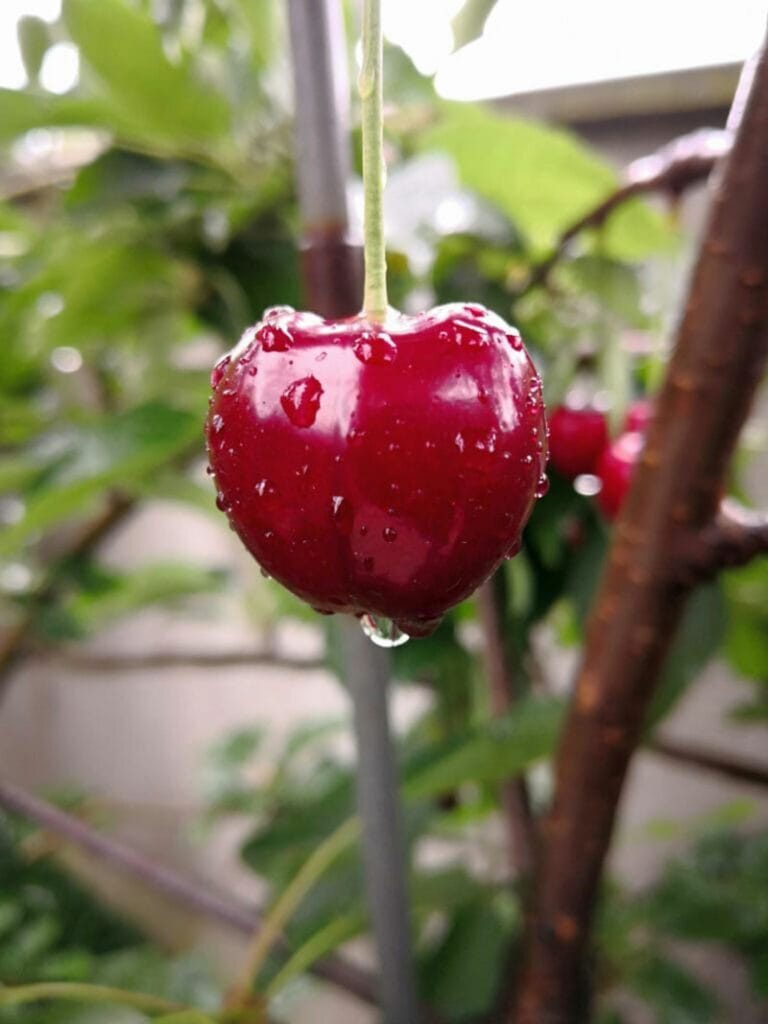
In the verdant Loire Valley of France, there’s a certain early-ripening cherry I adore – the Guigne d’Annonay.
Now, this cherry type, either rich black or dark red, isn’t your average fruit. They’re roundish, possessing a soft texture. And when bitten into, they burst with sweet, sub-acidic juice. Eating them fresh is my absolute favorite.
13. Muscat du Ventoux (Black Grapes)
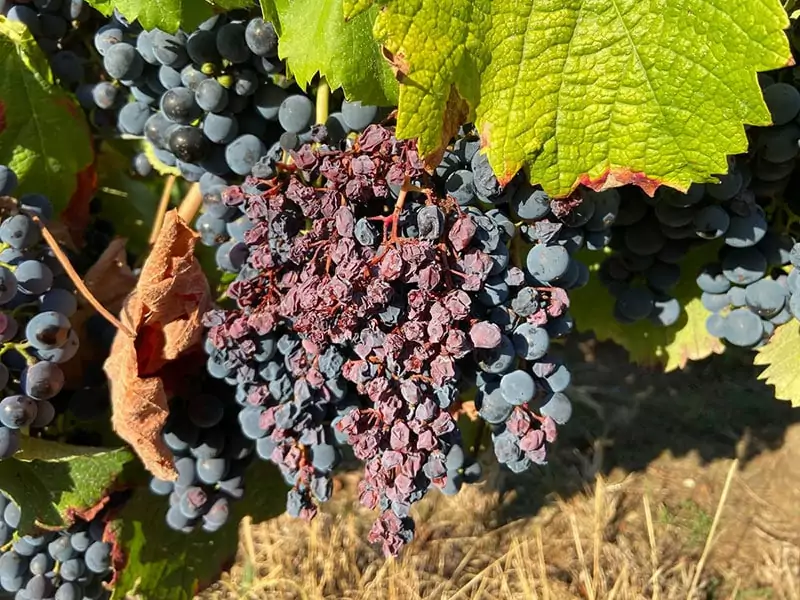
Muscat du Ventoux is a black table grape from France with a PDO label. These dark-hued gems, almost black, are grown on Mont Ventoux’s slopes, carrying a legacy dating back to ancient times. Hand-picked to ensure quality, each grape feels like a little treasure in your hand.
I’m always impressed with their natural sweetness, bursting with a juicy richness. Packed with nutrients such as antioxidants, vitamins C, A, and more [4], they’re a healthful dessert choice. Even as wines, their flavors show through, creating a taste sensation that’s truly mesmerizing.
14. Pomme du Limousin (Limousin Apples)
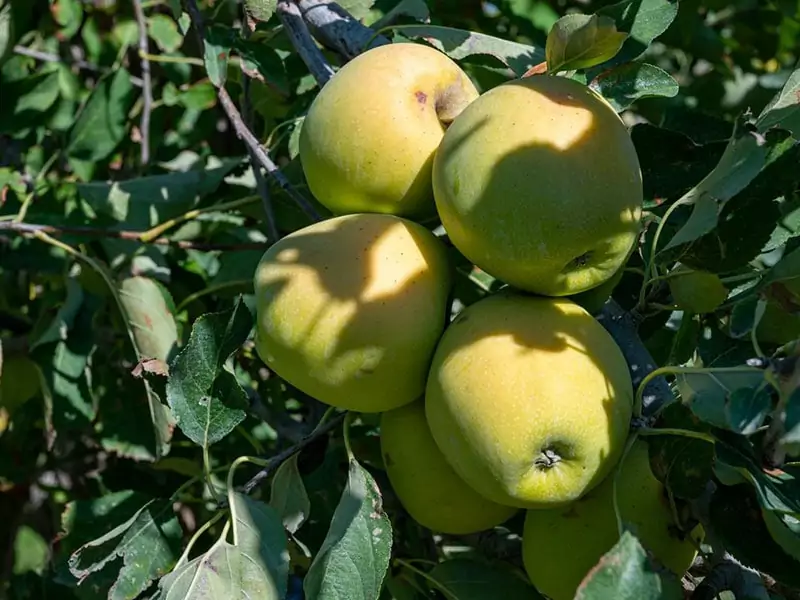
Pomme du Limousin is an emblem of the Limousin region in France. Harvested by gentle hands, this Golden Delicious variety stands out with its balanced sweetness and acidity. Its slightly elongated shape, pale green to yellow color, and minimum size of 65mm add to its visual appeal.
Yet, what makes it truly special is the crispy, juicy, and firm white flesh, that isn’t floury. Now, it’s not just a treat on its own; it also complements a diverse range of foods, from foie gras, blood sausage, and game meat to desserts like pies and crépes.
Since they are valuable, these apples must be carefully transported in water to avoid bruising.
15. Queen Victoria Pineapple – Reunion Island, France
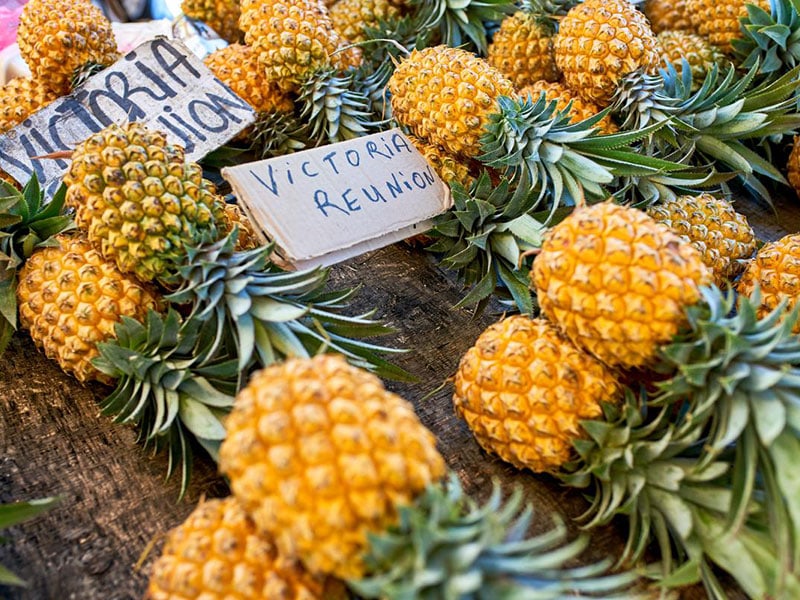
Queen Victoria pineapple is a petite yet powerful fruit hailing from the French island territory of Réunion. Since its introduction in 1668, this pineapple variety has been well-loved for its prominent fragrance and delectably fruity and sweet flavor.
This fruit is harvested from December to January. It has a light yellow color and a soft texture at the core. It’s an exceptional choice for enjoying fresh or making ice creams, cakes, and desserts.
Its regal name is well-earned – many deem it the world’s best pineapple, a title it proudly carries, along with a prestigious red label in France. Moreover, with bromelain and manganese contents, it can help prevent cancer and enhance bones.
To eat a pineapple, start by cutting off the top and bottom of the fruit. Stand it upright and carefully slice off the tough outer skin, making sure to remove any “eyes.” Once peeled, slice the pineapple into desired shapes and enjoy!
16. Fraise du Périgord (Strawberries)
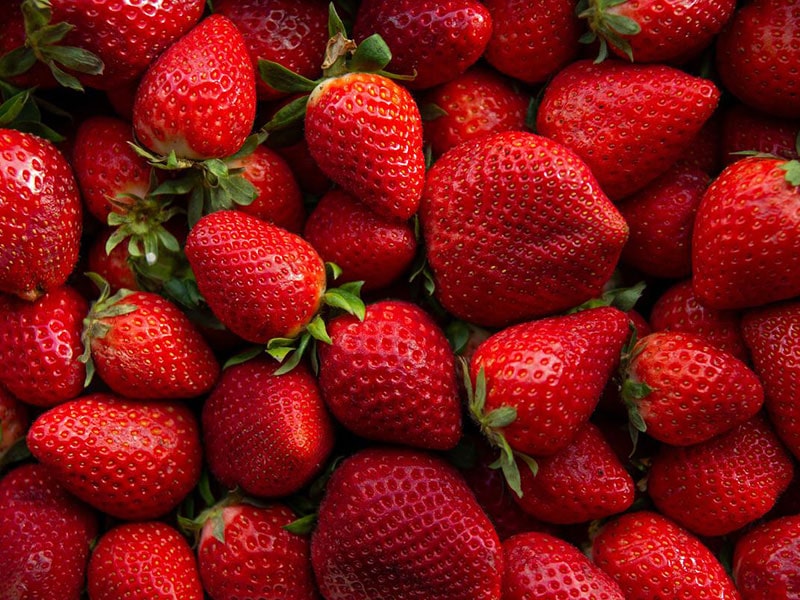
The Dordogne region in France is a land of open fields and chestnut trees. But there is another specialty, which is a strawberry cultivar called Fraise du Périgord. Grown since 1895, this terrain offers plenty of sunshine, water, and humus-rich soil, ideal for these strawberries.
Thanks to the ocean’s moderating influence on temperature, strawberries ripen evenly. Strict quality criteria ensure their exceptional color, size, shape, sugar content, firmness, and luster.
With up to six varieties, each bite offers an intense, deep, and fresh flavor balanced with just the right acidity. Whether savored with whipped cream, tossed into fruit salads, or transformed into sorbet, these strawberries always make a sweet impression.
17. Calville Blanc Apples
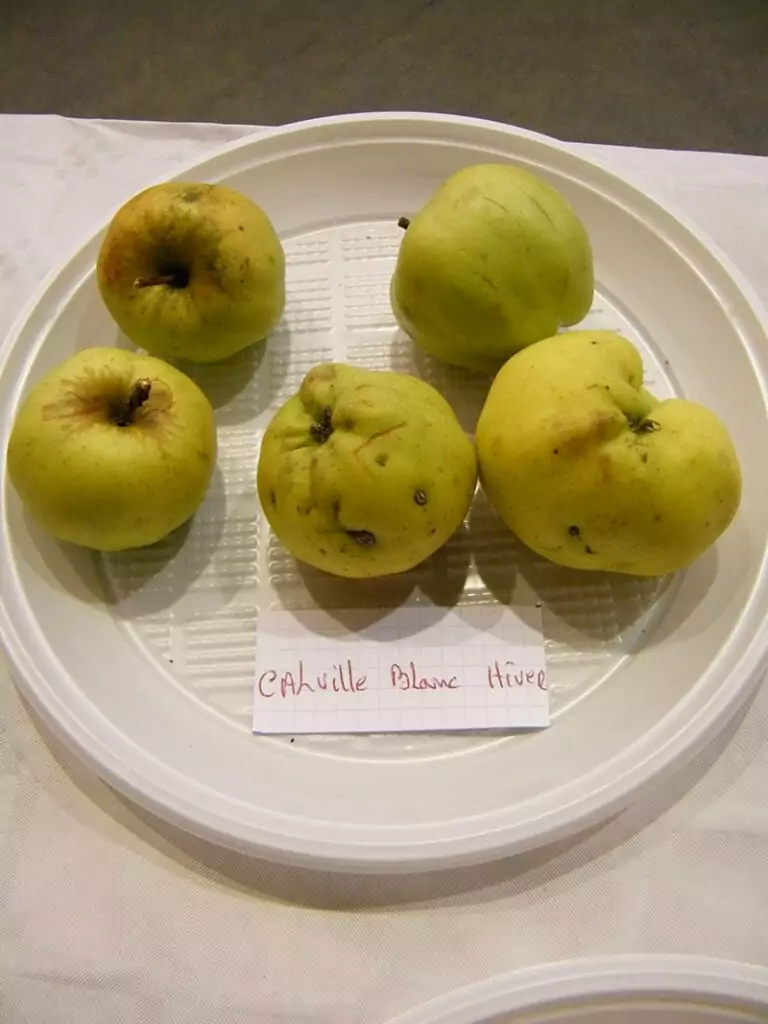
Credit: Calville Blanc d’hiver, Ailly-le-Haut-Clocher, Somme, Fr,Apple festival 03et04-11-2018 (104) by APictche
While in France, don’t miss the Calville Blanc apple, France’s most esteemed dessert apple. At first glance, its unique yellow skin with a light red flush and medium to large size will catch your eye.
As you take a bite, you’ll meet with a tart flavor from its tender, pale yellow flesh – a boldness that’s surprisingly pleasant. Besides this, the hint of banana aroma was a lovely addition.
My fondness for these apples has greatly grown due to their crucial role in apple pies. Their flavor profile and aroma also make them a perfect ingredient for sauces and cider vinegar as well.
These apples are harvested from late October through December. As they rest in storage after harvesting, their colors and flavors intensify. Astonishingly, they contain more vitamin C than an orange!
18. Kiwi de l’Adour (Kiwi)
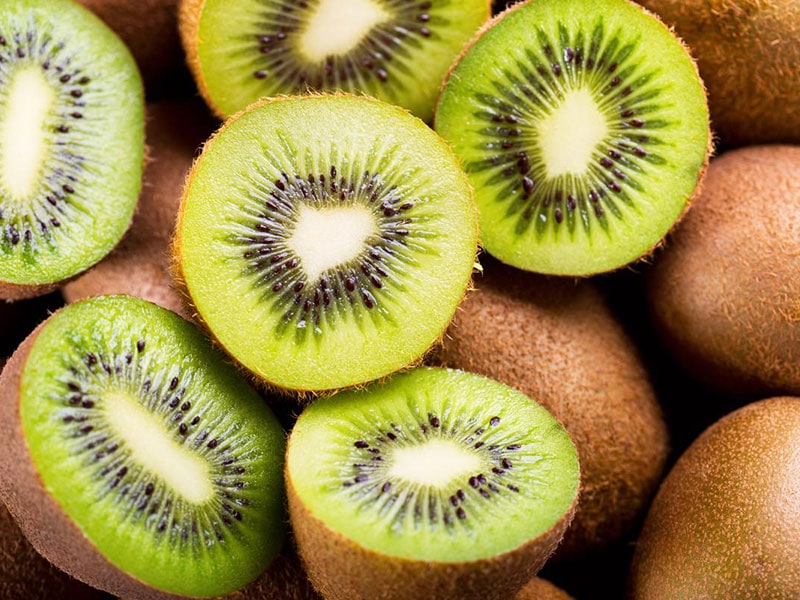
Kiwi de l’Adour, from France’s Pyrénées-Atlantiques region, has organoleptic qualities that distinguish it from the rest. When ripe, its juicy, green flesh with a succulent center offers a melt-in-the-mouth texture.
Tiny edible black seeds dot its heart, while a slightly acidic flavor provides a refreshing kick. The frost in late autumn blesses the kiwi with a higher sugar content. Adorning the exterior of the fruit is a skin that transitions from brown to green, covered in delicate, silky hairs.
Moreover, it is essential to learn some tricks to store kiwi properly for the best quality. The texture and taste owe a lot to the region’s climate. Kiwi de l’Adour is an excellent choice for eating fresh.
Wash the fruit thoroughly and cut off both ends. Then, hold the kiwi upright and carefully peel off the brown, fuzzy skin with a knife or peel it with your hands. Once peeled, slice the kiwi into rounds or halves and dig in!
19. Belle Angevine (Pears)
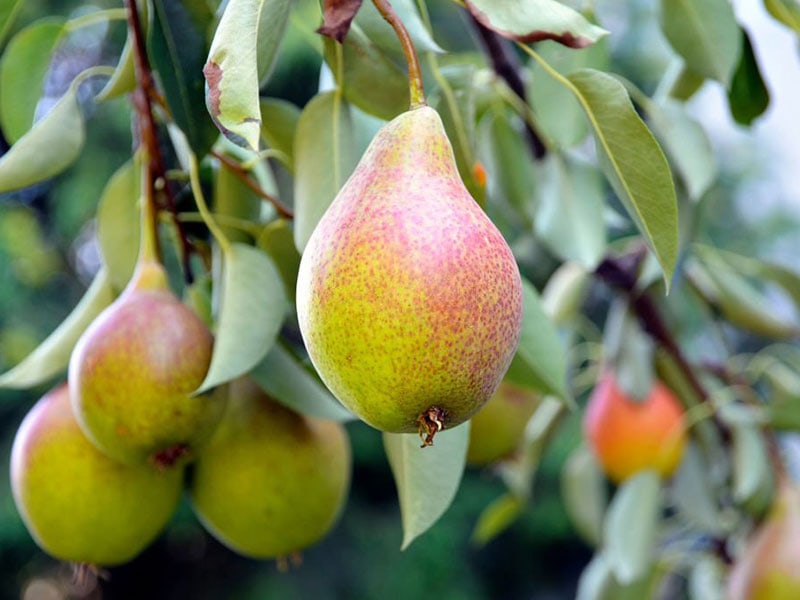
Belle Angevine is a pear dating back to the 17th century. These giants are so heavy they can’t wait to be picked, preferring instead to drop from the trees on their own.
Their skin is a vibrant green that shifts to yellow and finally red, which signals they’re ripe. Most of the time, I’ve seen these pears go straight into the kitchen, where they transform into incredible desserts.
Italy
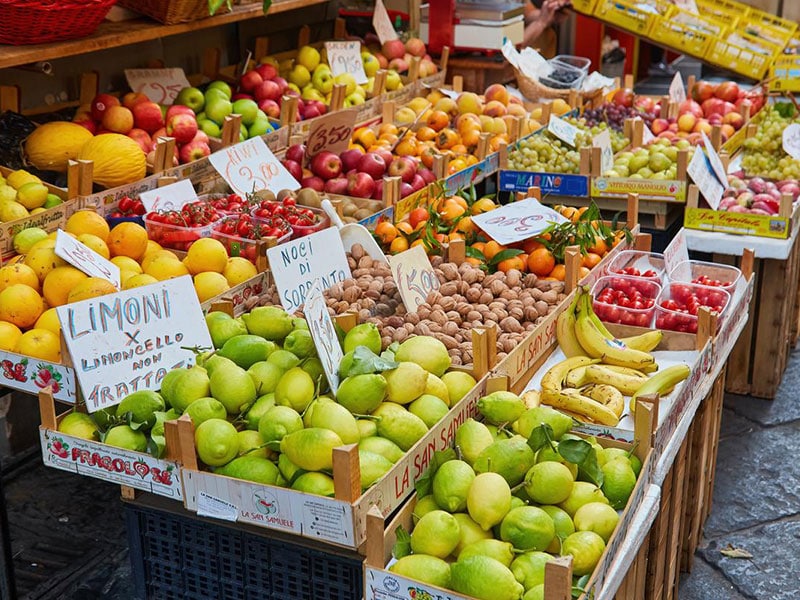
20. Uva di Puglia – Apulia (Puglia)
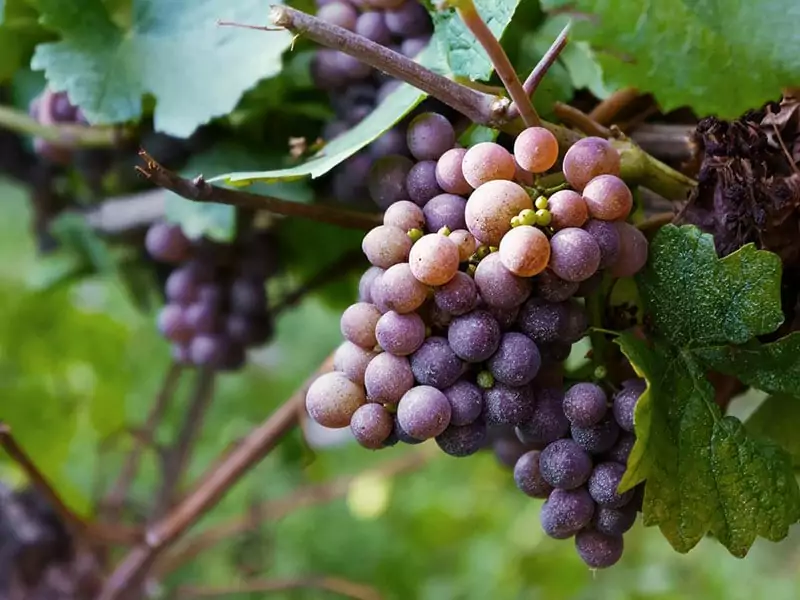
Uva di Puglia refers to a group of table grapes, including Italia, Regina, Victoria, Michele Palieri, and Red Globe. Grown in Apulia, a region that’s around 330m above sea level, this delicious Italian fruit flourishes in the Mediterranean climate and pedoclimatic conditions.
They are incredibly juicy and sweet with a firm, crunchy bite. Their colors range from straw yellow in Italia, Regina, and Victoria to intense rosé doré in Red Globe and a dark, almost black, purple in Michele Palieri. Their impressive long shelf-life is another significant advantage.
21. Ficodindia dell’Etna (Prickly Pears)
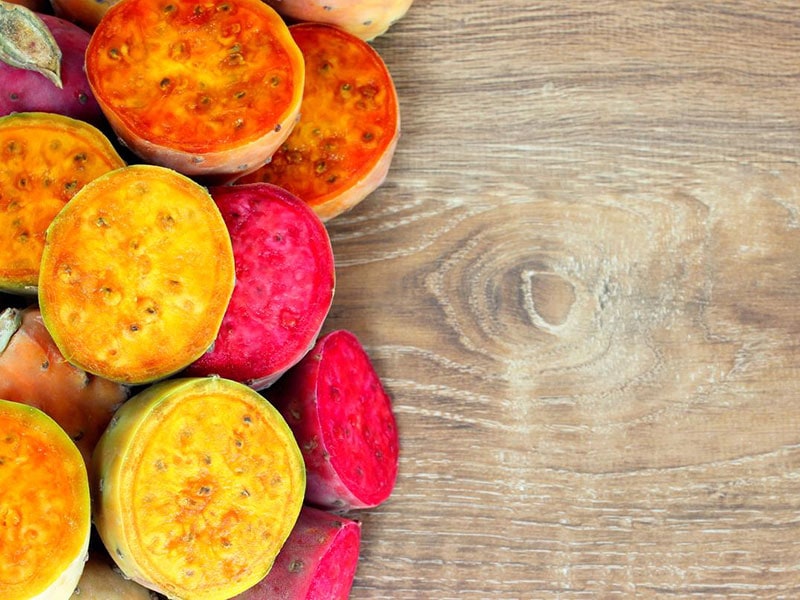
Ficodindia dell’Etna, or prickly pear, grows happily in the Sicilian province of Catania, specifically in the Mount Etna Regional Park.
These cactus pears thrive in the native lava soil areas and owe their quality to a unique cultivation technique called scozzolatura. This technique involves removing the first flowers to trigger a second bloom, resulting in larger, superior fruits.
The pulp, deep yellow to vibrant ruby red, offers a mild sweetness, tasting like a mix of lemon and watermelon. There are three varieties to consider – Sanguigna, Surfarina or Nostrale, and Muscaredda or Sciannarina.
Each of these can be enjoyed in their fresh form, allowing you to appreciate their original taste. They can also be transformed into delicious candy, juices, and jams. Moreover, they are great for incorporating into ice cream and traditional Sicilian desserts as well.
One particular standout creation that utilizes these pears is the Rosolio di Ficodindia dell’Etna liqueur.
22. Limone dell’Etna (Etna Lemons)
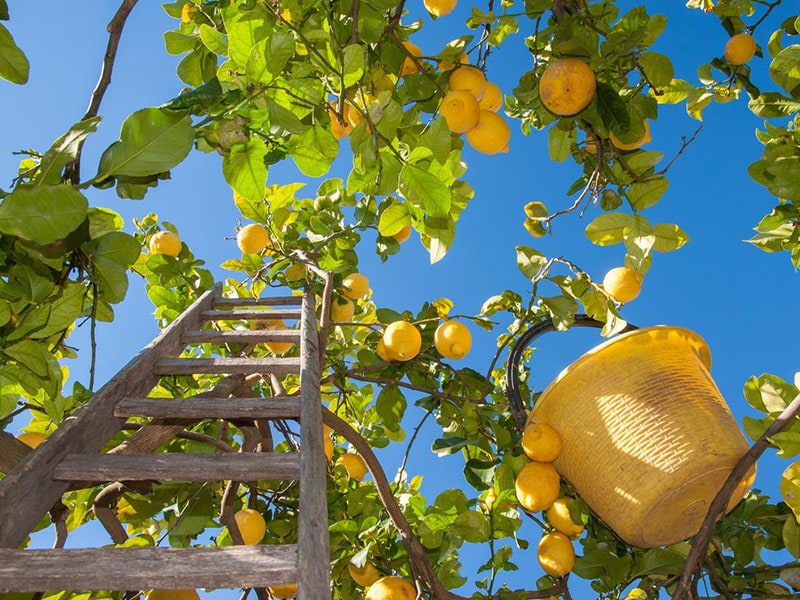
Limone dell’Etna is a kind of lemon growing along the Etna coastal strip from the Alcantara River to the northern parts of Catania. They split into two cultivars: Femminello and Monachello.
Femminello, harvested in winter, spring, or summer, has an elliptical shape and a flesh color varying from light green to lemon yellow. On the other hand, Monachello, elliptical, ovoid, or spheroidal in shape, can also be collected in winter, spring, or summer.
With a unique aroma and high-quality essential oils due to the volcanic soil and climate, they’re great for making juices and candied peel. A special technique, forzatura or secca, enables the growth of these lemons during the summer months.
23. Mela Val di Non (Trentino Apples)
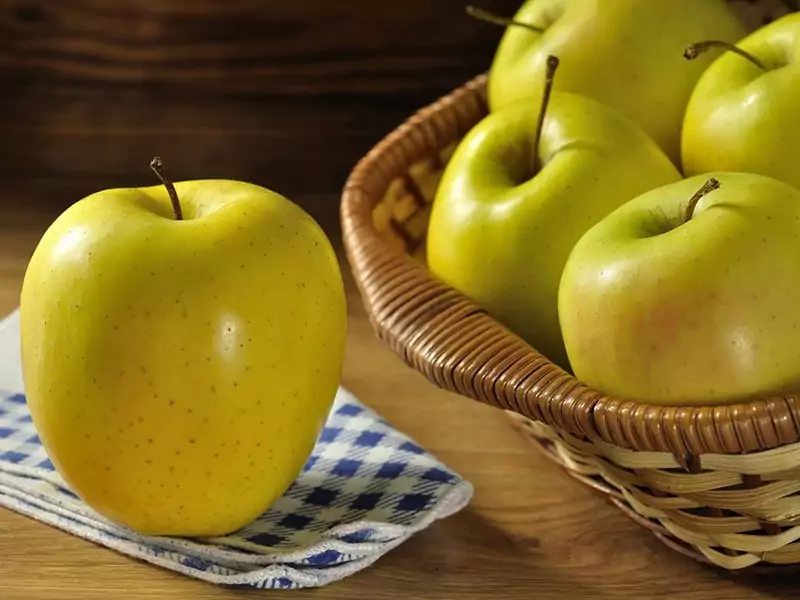
Mela Val di Non, a name saved for Golden Delicious, Red Delicious, and Renetta del Canada varieties, hails from Val di Non.
Nestled in the fertile Non and Sole valleys by the Noce River banks, these apples need to meet strict standards for crunchiness, natural sugars, and acids. Qualified fruits must be in the 1A and Extra categories.
Depending on the variety, their flesh could range from a pasty, sweet bite to a crunchy, sour one. They complement starters, salads, and even pork or game-based dishes. Not to mention, their integral role in whipping up apple cakes, pies, strudels, and fritters is undisputed.
24. Pesca di Verona (Verona Peaches)
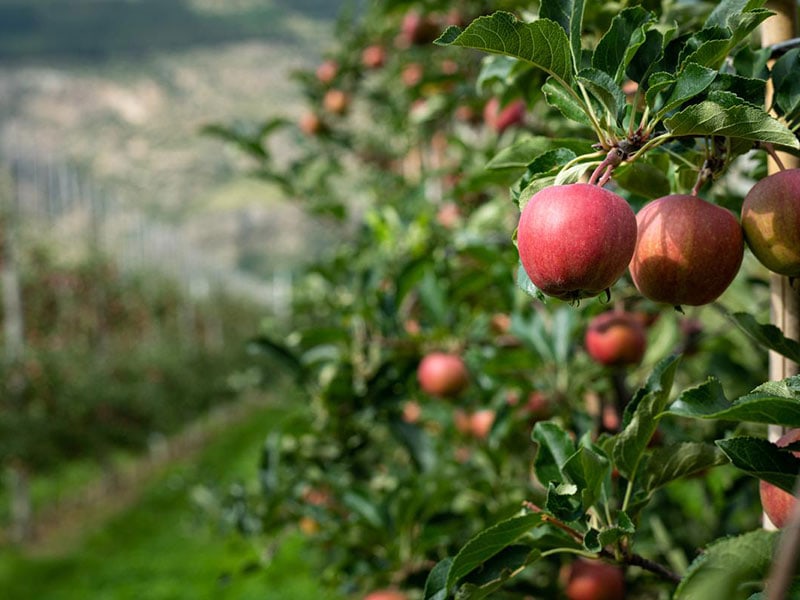
Pesca di Verona is truly Vetrona’s pride. These peaches – Polpa Bianca, Polpa Gialla, and Nettarina a Polpa Gialla – are nurtured near beautiful Lake Garda. Their pulps are a burst of juicy flesh that balances sweet and slightly tart notes, which is just perfect for summer.
Besides eating fresh, I find them versatile for fruit salads, desserts, ice creams, jams, and preserves. Their thirst-quenching quality was an added bonus.
25. Limone Costa d’Amalfi (Amalfi Lemons)
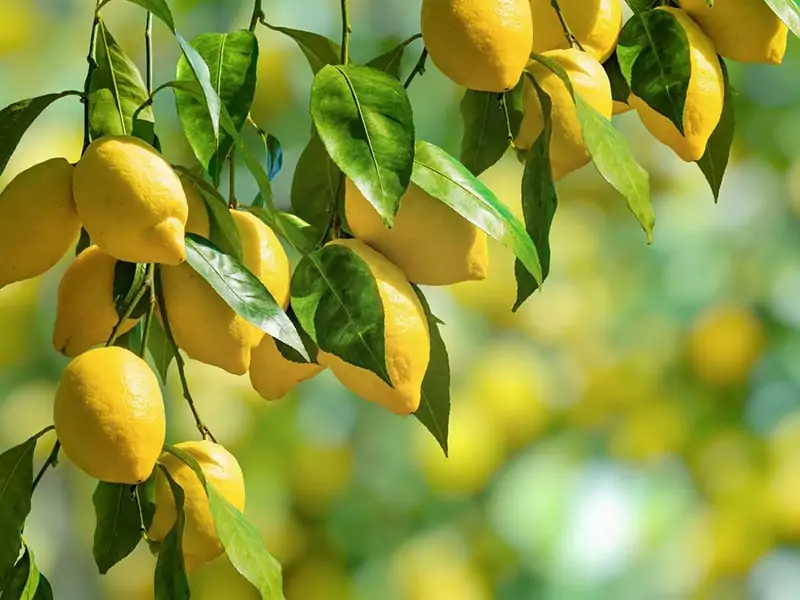
From the first taste, Limone Costa d’Amalfi sparked joy with its low acidity and delicate flavor. These lemons, from the Amalfi coast and cultivated in Salerno, have a so sweet taste that I can eat them whole!
Covered with a light, yellow pale skin, they’re traditionally served sliced, sprinkled with salt and mint leaves, then drizzled with vinegar. I’ve seen them in jams, preserves, lemon honey, sorbettos, and various desserts.
And it’s hard to find a dish in Campania cuisine not flavored with Amalfi lemon juice or zest. Moreover, Limoncello, a refreshing summer liqueur, wouldn’t be complete without them.
26. Arancia Rossa di Sicilia (Sicilian Red Orange)
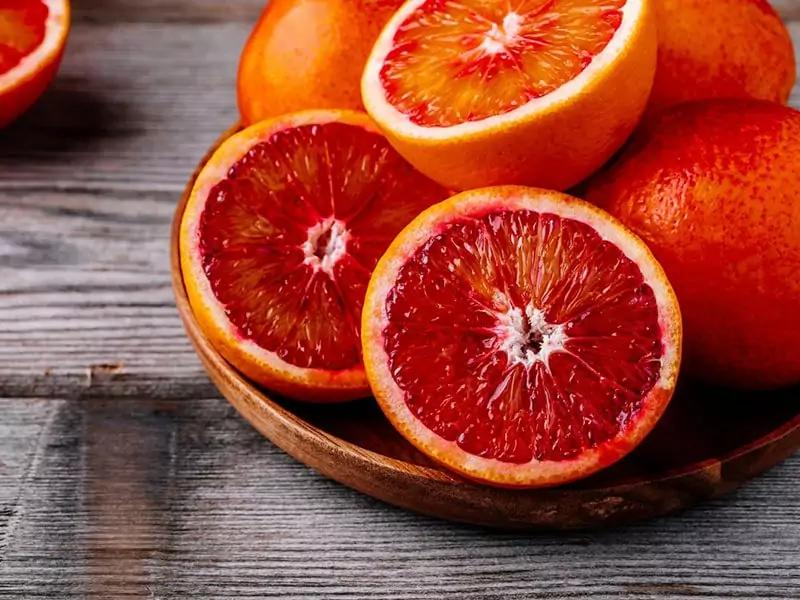
Arancia Rossa di Sicilia, the famed red orange of Sicily, carries the affectionate moniker of raspberry orange. It’s a fascinating hybrid, likely between the pomelo and tangerine.
Grown in the foothills of Mount Etna, this fruit comes in three distinct varieties: Tarocco and Moro from Italy, and Sanguinello from Spain.
The crimson, almost blood-like flesh of these apples owes its dark hue to the presence of anthocyanins, with Chrysanthemin as the primary contributor.
Peeling can be a bit challenging as the skin is tougher than other oranges, but the reward is a raspberry-like taste that can lean towards the tart side.
Arancia Rossa di Sicilia also champions health, protecting DNA from oxidative damage and potentially reducing cardiovascular risks.
27. Amarena Cherry
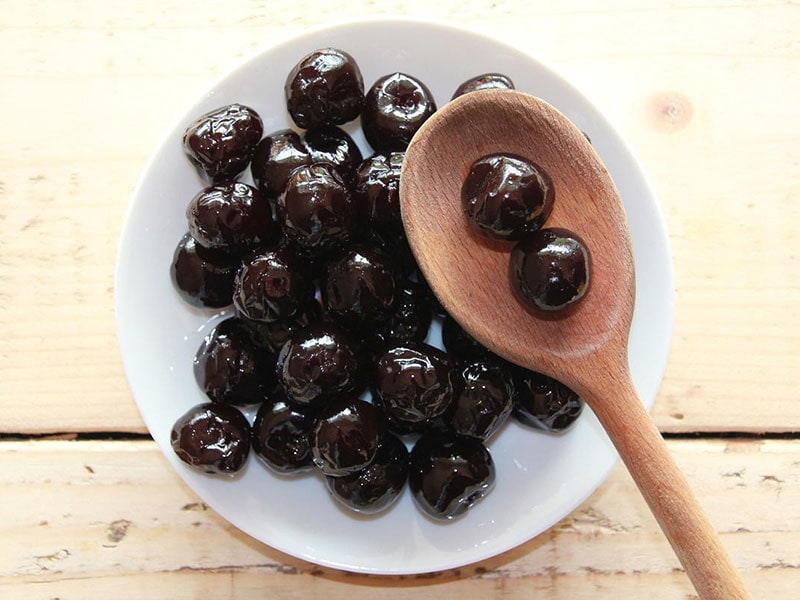
Hailing from Bologna and Modena, the Amarena cherry is a rich, dark-colored variety of Prunus cerasus, developed by Gennaro Fabbri. These cherries are nearly black and have a tender, firm flesh that combines sweet, sour, and acidic flavors.
I recall the enticing sight of these cherries, bottled in syrup, adorning decadent chocolate desserts. They also effortlessly slide into gelato toppings, fruit salads, cocktails, cakes, and more.
One of my favorite forms is the sweet and sour cherry syrup. In addition, these cherries taste great in tarts, pies, pastries, and chilled drinks.
28. Limone di Sorrento (Metropolitan Lemon)
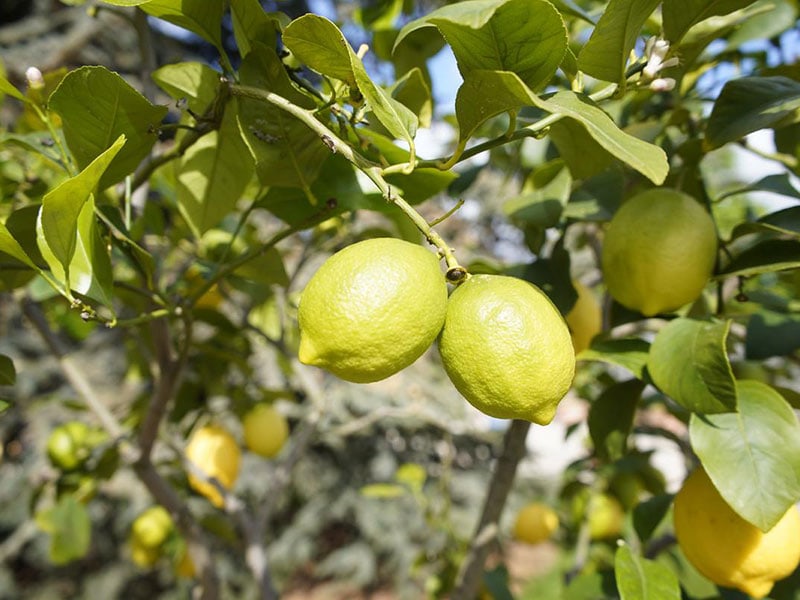
A star from the Sorrentine Peninsula, Limone di Sorrento or Massese, brings its own vibrant flair to the citrus family.
Its roots are steeped in history, tracing back to the local ecotype Ovale di Sorrento, grown in Naples since the Renaissance. The first seedlings were put in the ground by the Jesuits in the 18th century.
One of its fascinating attributes is its ability to bear fruit up to five times a year. The bright yellow skin gives way to an abundance of juice that pairs well-balanced sugar content with high acidity levels.
You can eat these lemons fresh or use them as a flavorful addition in starters, desserts, preserves, marmalades, jams, and liqueurs.
Ireland
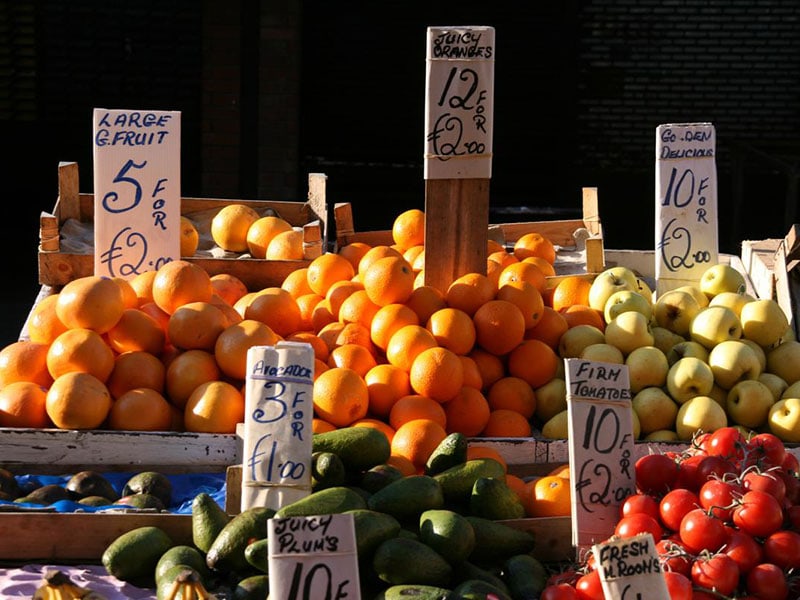
29. Wexford Strawberries – Ireland
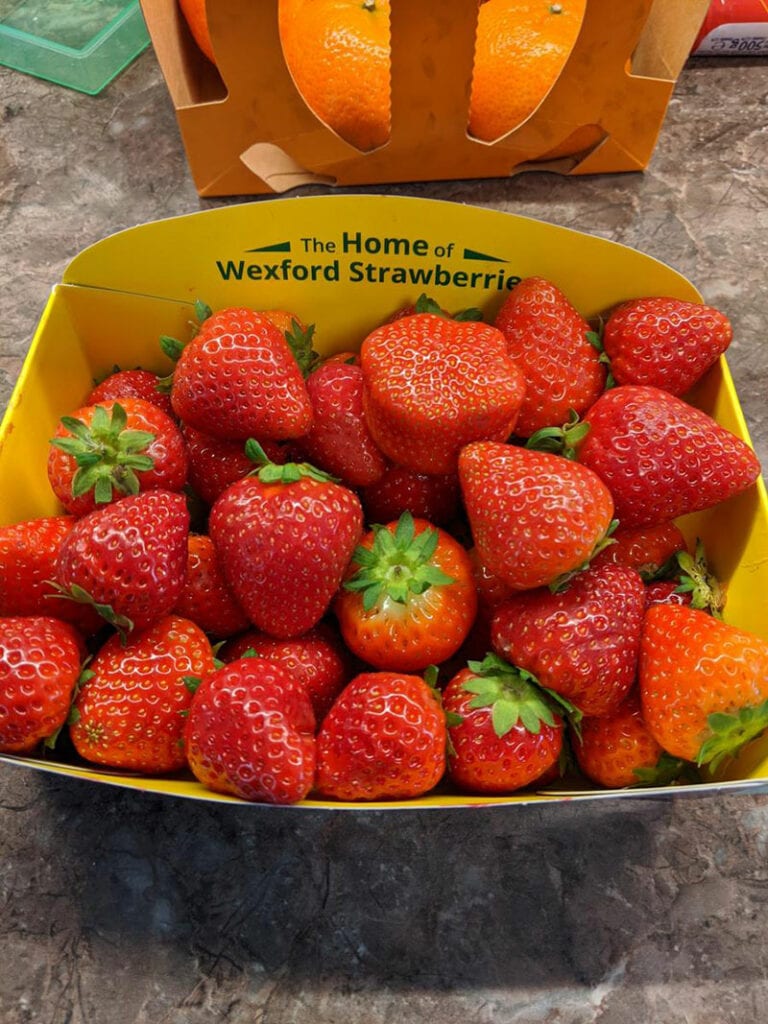
Wexford strawberries are beloved Irish fruits coming from County Wexford. They didn’t make their debut until 1939. Praised for superior quality and flavor, these beauties flourish in a mild and sunny climate with shale soil, resulting in plump and juicy fruits.
Once a three-week spectacle in July, the Wexford strawberry season now spans May to October. June even sees a whole festival dedicated to them!
To enjoy them at their finest, you must know how to cut strawberries correctly. From pairing with whipped cream and ice cream to adding a fruity touch to cocktails, pavlovas, and cheesecakes, these strawberries make a sweet impact.
United Kingdom
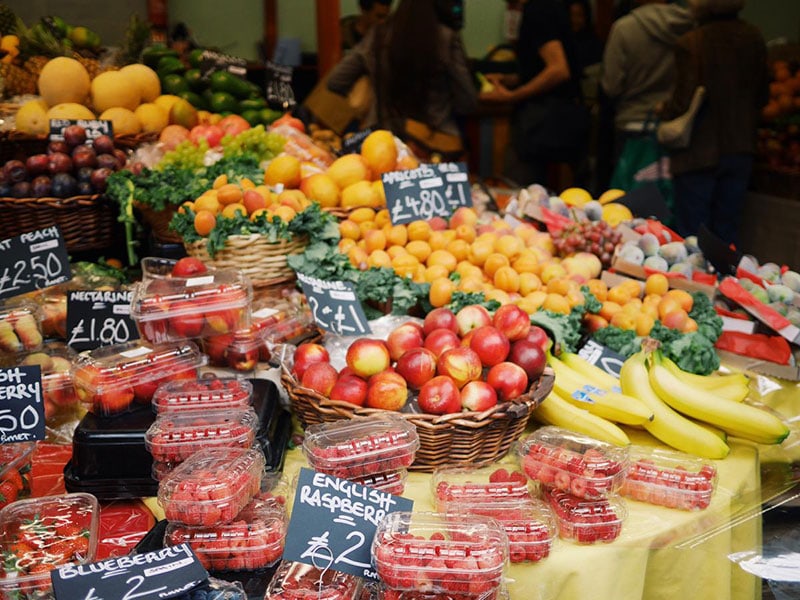
30. Cox’s Orange Pippin

Cox’s Orange Pippin, or simply Cox, is a prized apple variety with a deep-rooted history dating back to 1825. Richard Cox, a retired brewer and horticulturist, first cultivated this apple in Colnbrook, Buckinghamshire, England.
This exceptional British fruit is a bit challenging to grow, as it demands a cool maritime climate and is susceptible to diseases. Still, its flavor and appearance make the effort worthwhile.
This apple is a sight to behold, medium-sized and splashed with a spectrum of orange-red to bright red hues, all over a deep yellow base. The flesh beneath is aromatic, yellow-white, crisp, and satisfyingly juicy.
Its sprightly subacid flavor, infused with hints of cherry and anise, mellows as the apple ages. If you’re wondering about its ripeness, give it a shake; rattling seeds indicate it’s ready.
Peak season runs from November to April, and they store well until late spring. Cox often joins forces with other apple varieties in cider production.
31. Discovery Apples
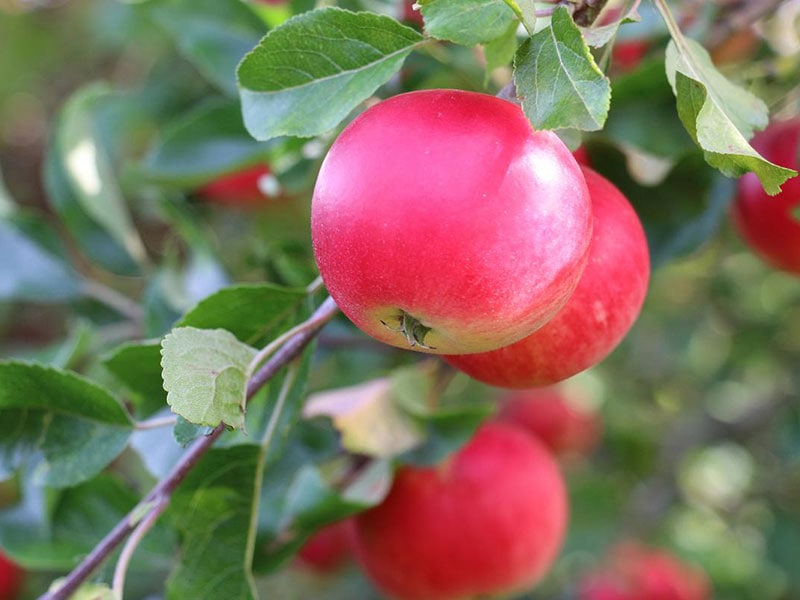
Discovery apples were found in the late 1940s in Langham, Essex. They’re offspring of the Worcester Pearmain, an apple variety from the 19th century, noted for its attractive red finish.
Their skin presents a gorgeous pink-red over a green-yellow backdrop, while the white flesh bursts with sweet, tangy, slightly tart flavors, hinting at strawberries. Harvest time is from mid-August to September, making them ideal as dessert apples.
If you fancy crunching into one fresh or slicing it into a salad, these apples bring a sweet satisfaction.
32. Blenheim Orange Apples
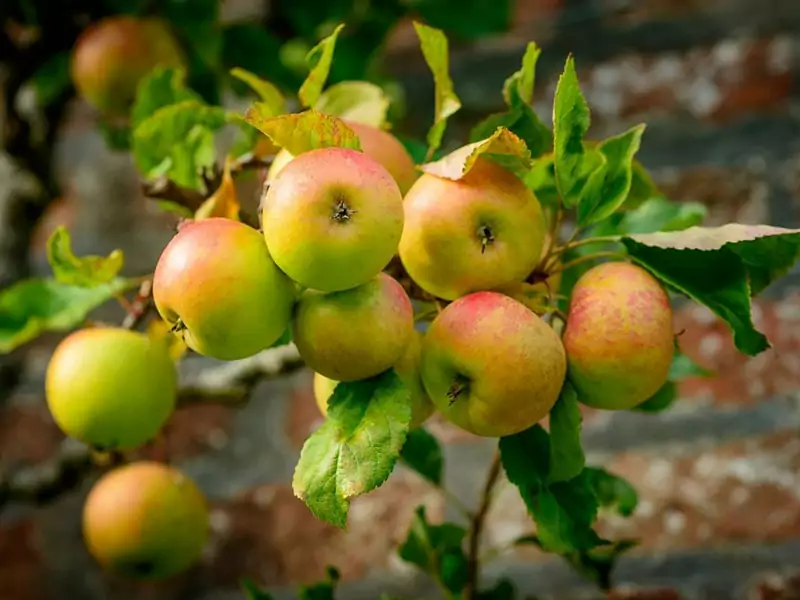
Blenheim Orange apples carry a history dating back to the mid-18th century, originating from Blenheim Park in Oxfordshire. Locals sometimes refer to them as Kempster’s Pippin.
With their medium to large size, these apples have a flat to round shape with rounded ribs and a smidge of russet. Their color palette blends orange-red, red stripes over gold or greenish-yellow. The texture is a bit crumbly, while the flavor is sweet with a slight nutty twist.
These apples are champions in the kitchen, ideal for desserts and cooking as they retain their shape beautifully, and pairing them with cheese is just sublime.
33. Kingston Black
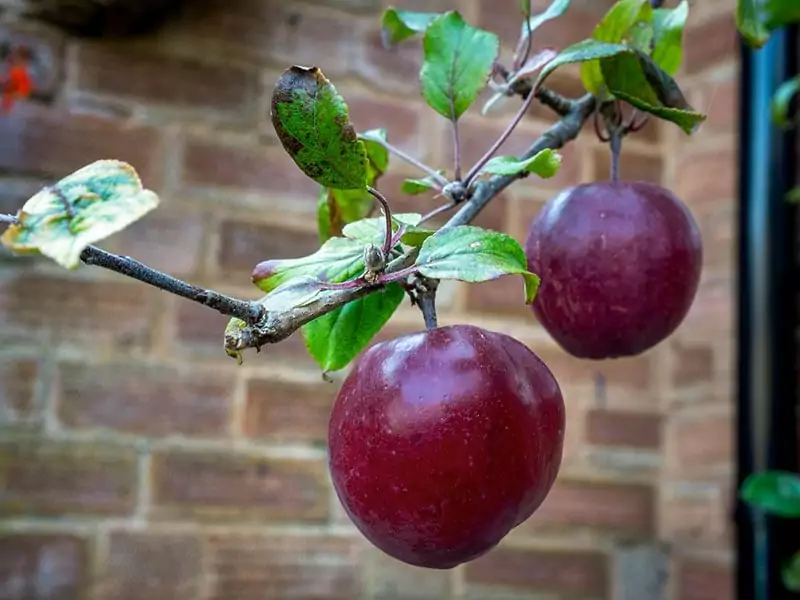
Kingston Black, or sometimes known as Black Taunton, is an apple variety from the United Kingdom, valued for its prime role in cider production. The apple’s skin can be a striking dark red or purplish hue, though it does not take on a black shade as the name might suggest.
High in both tannin and acid, this small, round fruit has yellow skin with red streaks, or sometimes it turns dark red with dark purple streaks on the sunward side, all of it interspersed with patches of gray russeting.
34. Dabinett Apples
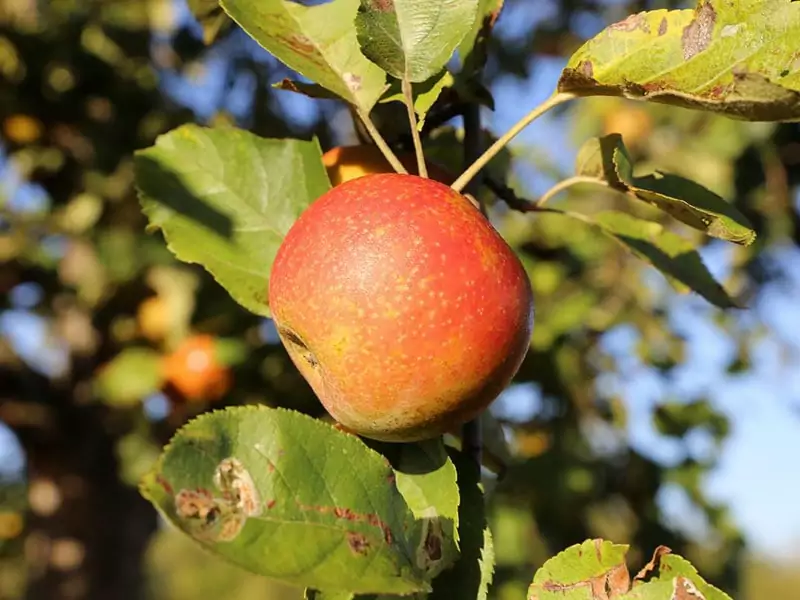
With roots in the early 1900s, Dabinett apples have a legacy as the chosen fruit for making cider in Somerset, all thanks to its founder William Dabinett. They’re ripe for harvest in November in the United Kingdom.
These apples are categorized as ‘bittersweet’ cider apples, which corresponds to their small size and yellow-green color adorned with red speckles. Underneath the skin, you’ll find greenish, aromatic flesh.
The juice boasts a low acidity level, but keep in mind, they’re not your go-to for cooking.
35. Williams Pear – England
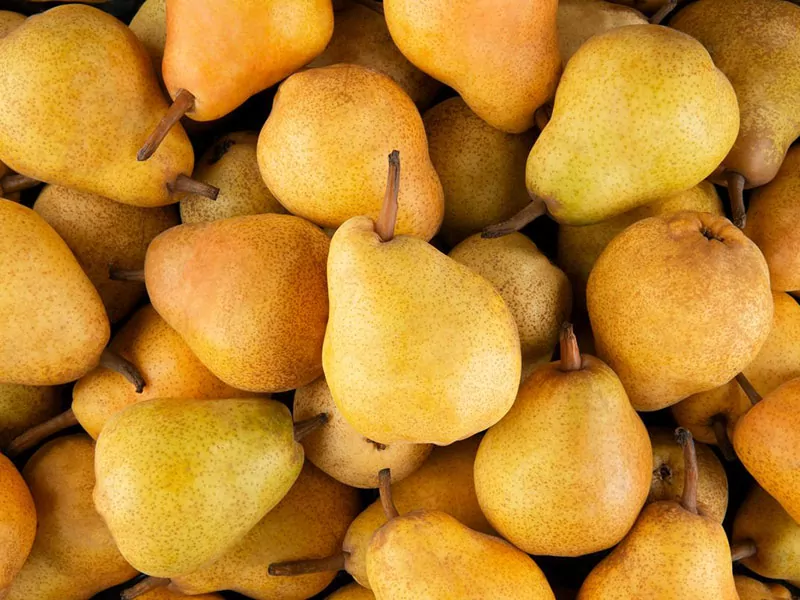
Williams pear is also known by its grand name, Williams’ Bon Chrétien. If you’re in the United States or Canada, you’ll recognize it as the Bartlett pear. It’s the favorite pear in many places outside Asia, distinguished by its bell shape – a rounded bell sitting on the bottom half of the fruit.
Starting off with green skin, it gracefully turns yellow upon ripening, but don’t be surprised if you come across its red-skinned siblings. As a summer pear, it thrives away from cold temperatures. It’s a joy to eat raw, but don’t hesitate to bake it, as it maintains its shape.
Commercially, they are picked and transported green, and they find their way into Poire Williams, a fruit brandy, and Belle de Brillet, an infused cognac.
Netherlands
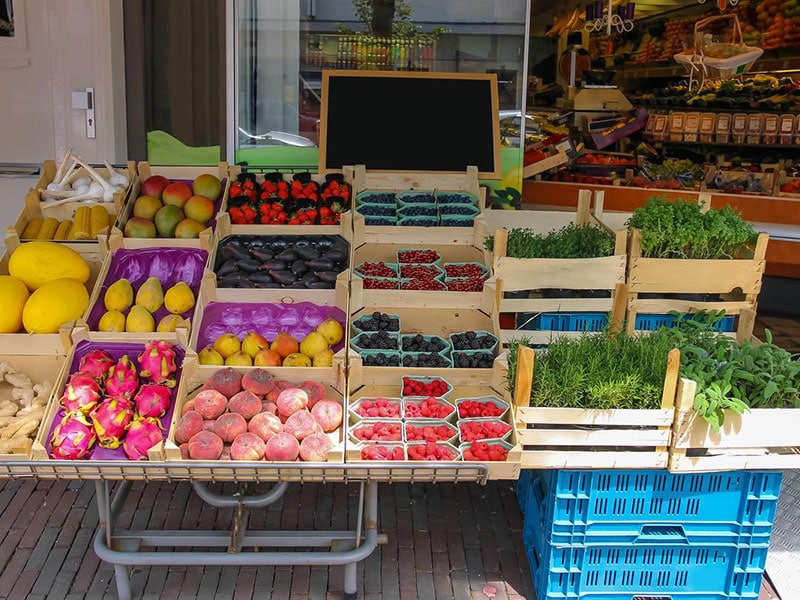
36. Karmijn de Sonnaville (Dutch Apples)
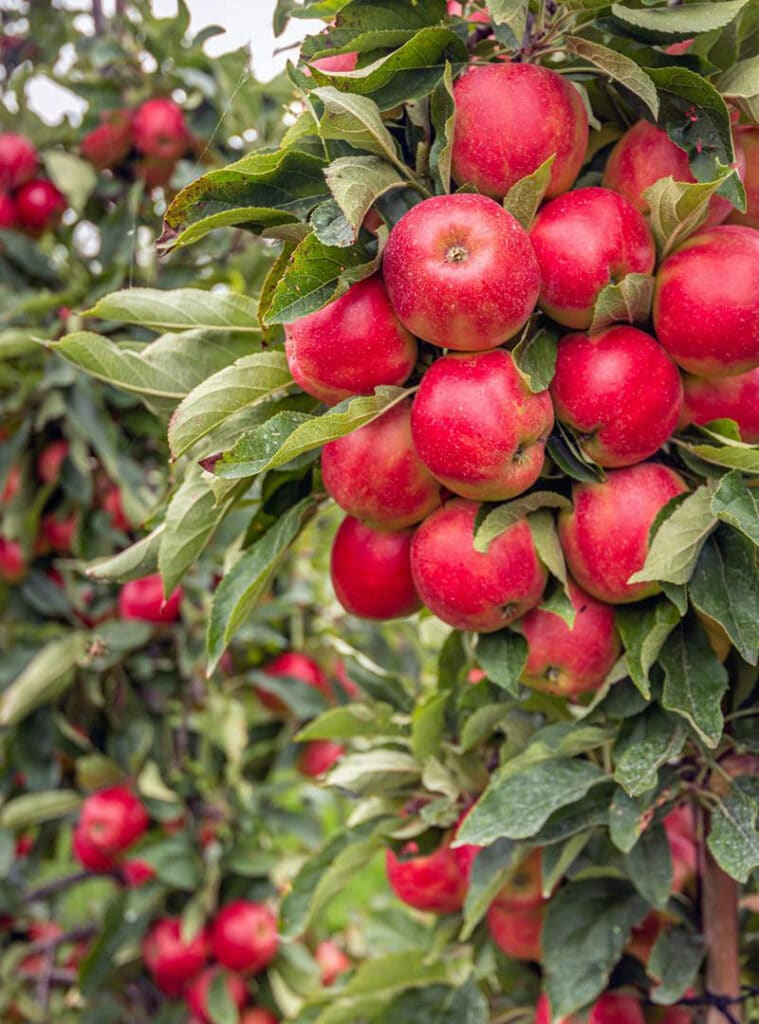
Karmijn de Sonnaville is an apple variety that took root in 1949 in Wageningen, the Netherlands. Its creator, Piet de Sonnaville, brought this Dutch-grown fruit to life by blending Cox’s Orange Pippin and Jonathan.
Despite being a challenge to cultivate, it started commercial growth in 1971. The standout characteristics include high sugar and acidity levels, giving a juicy, crisp, and slightly coarse bite. Its tanginess mellows a few weeks post-storage, a fascinating transformation indeed.
While not grown in high volumes, its unique attributes make it a star for fresh consumption and juice-making.
37. Red Prince Apples
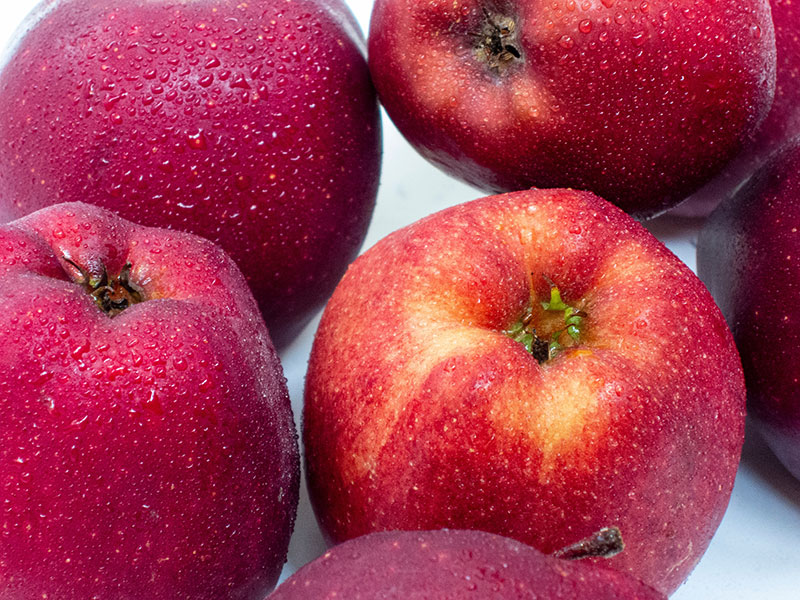
Deep in Weert, a town in the Netherlands, Red Prince apples made their first appearance. This grand hybrid child of Jonathan and Golden Delicious stands out with its deep red hue and large size.
Biting into its crisp, juicy flesh, a sweet melody of flavors is unleashed. The flavor gets more complex and balanced between tangy and sweet after a few months of aging in cellars post-harvest.
Fall through late winter is its prime time, and versatility is its game – be it fresh, cooked, baked, juiced, or as a special ingredient in soups, sauces, and salads.
38. Elstar Apples
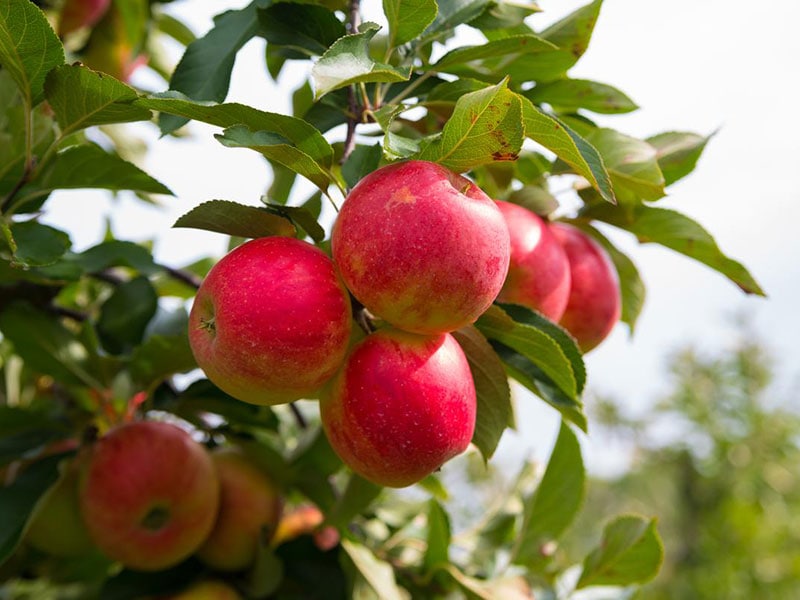
Born in the 1950s in Elst, Netherlands, Elstar apples are a blend of Golden Delicious and Ingrid Marie apples. They’re known and adored across Continental Europe and got their American debut in 1972.
These medium-sized apples draw the eye with their mostly red skin, blushed with yellow undertones. Their white, crispy flesh complements their skin with its pleasant crunch. Beyond just munching on them, their sweet flavor gets a spotlight in desserts and apple sauce making.
39. Belle de Boskoop Apples

From the fruitful lands of Boskoop, Netherlands, Belle de Boskoop apples, also known as Goudrenet, Goudreinet, or Goudreinnette, entered the scene as a lucky seedling in 1856.
With variations in red, yellow, and green, this rustic apple flaunts a firm and tart taste with an alluring fragrance. These apples are vitamin C champions, containing 4 times more than Granny Smith and Golden Delicious.
And their qualities only get better with time, storing brilliantly post-harvest and performing splendidly in numerous cooking recipes.
Greece
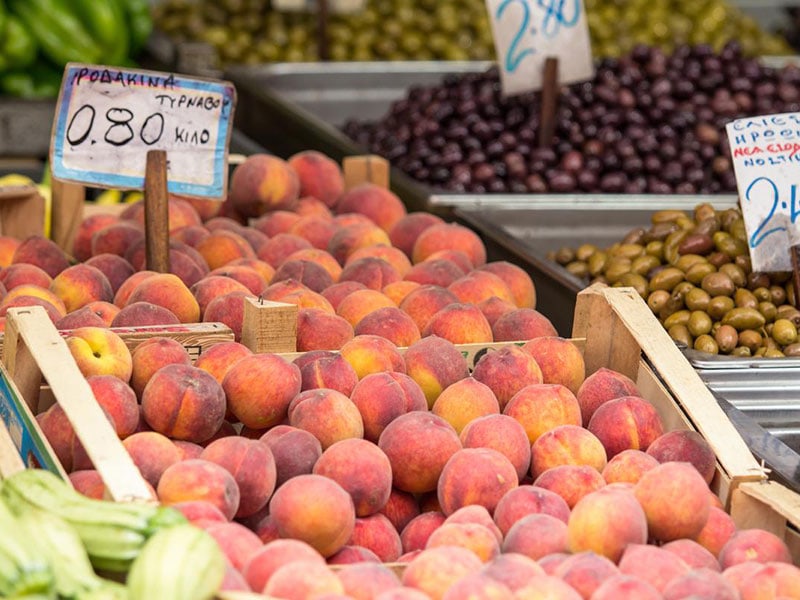
40. Kerassia Tragana Rodochoriou (Cherry)
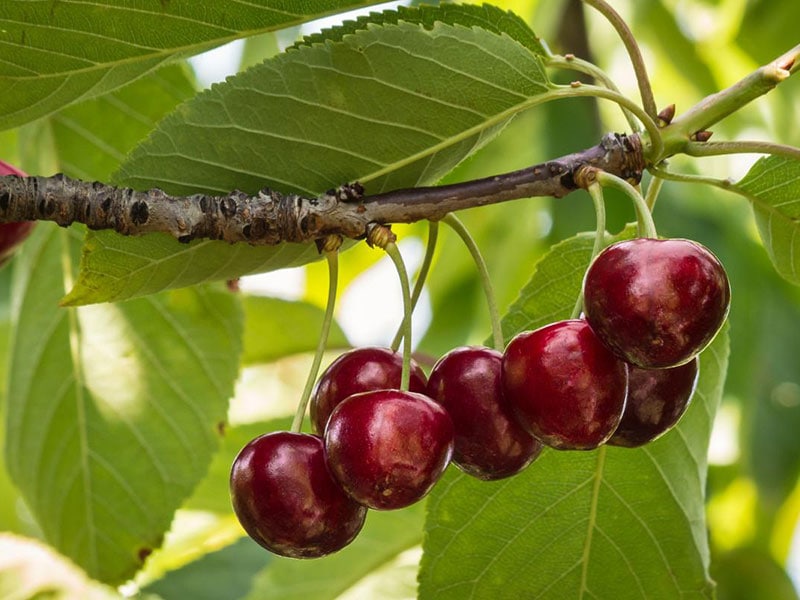
Kerassia Tragana Rodochoriou cherries have been traditionally grown in the village of Rodochori, Kozani, since the 1950s. In the early summer, these Greek fruit products are handpicked from the trees.
They’re a blend of Tragana ofi Edhessa and Napoleon trees, resulting in a high-quality cherry with an intense red color and juicy, firm pulp with a fantastic taste. That’s why their fame reaches far beyond Greece’s borders.
Whenever I have one, whether straight from the tree or sliced in a fresh salad, it feels like a celebration of summer’s arrival.
41. Stafida Zakynthou (Corinthian Raisins)
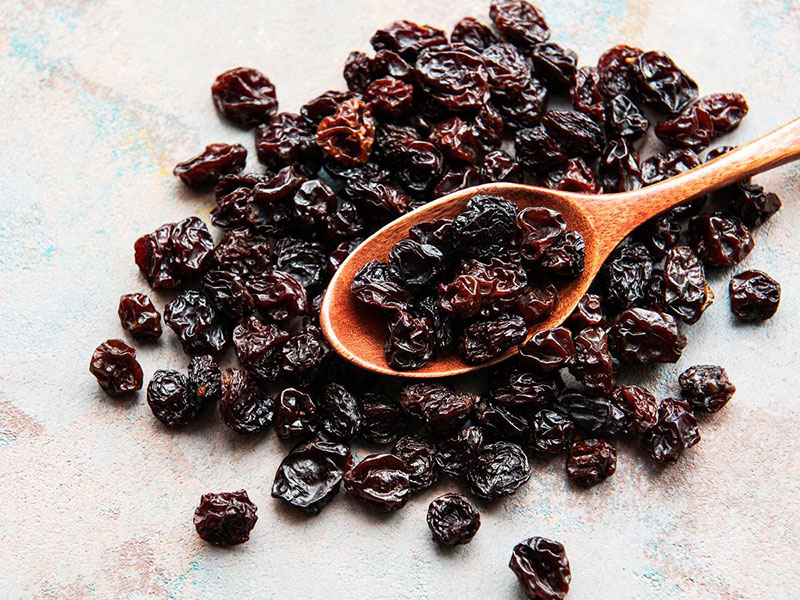
Since the 16th century, these small, seedless grape berries have been cultivated and dried under the sun’s radiant glow on Zakynthos island. They are fondly named Black Corinth.
Extensive hours of sunshine and the summer heat give them their impressive sugar content and sweet flavor. They are commercially known as Zante currants or Corinthian raisins.
Harvest time comes when these grapes wear a deep purple hue and are rich in sweetness. Then, on paper or plastic grape racks, they’re allowed to bask and dry naturally, untouched by chemicals.
In the ancient city of Aigio in northern Peloponnese, these berries are known as Korinthiaki Stafida Vostitsa. Despite their smaller size, they still pack a sweet punch with a 75% sugar content and a hearty helping of vitamin C.
42. Stafida Ilias (Black Grape Raisin)
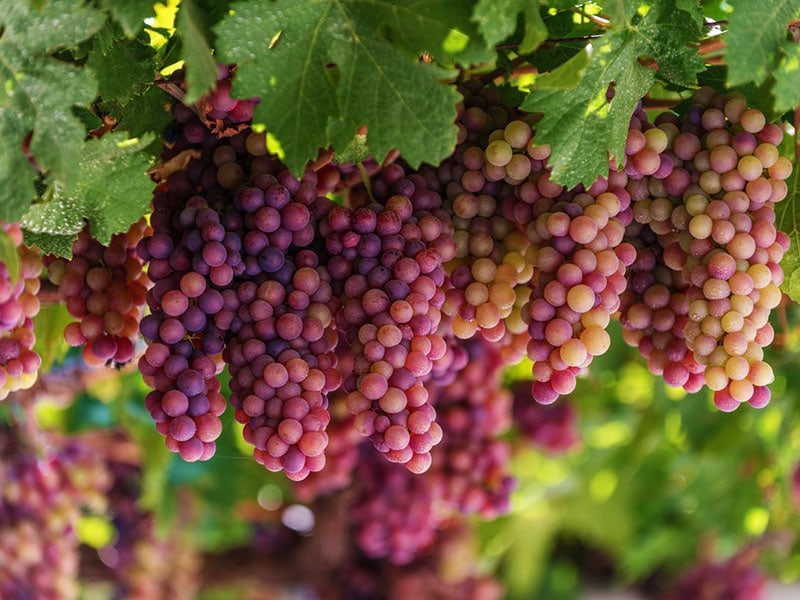
Stafida Ilias are unique raisins made from black wine grapes, with their home being the Ilia prefecture, renowned for its wonderful soil and climate conditions. These raisins, dating back to the early 14th century, are available for harvest in August, ahead of other grape types.
Their distinct appeal lies in their deep black color and uniform, round shape. In Ilia, they embrace two drying methods.
The first one involves basking the grapes directly under the sun on dedicated surfaces named “alonia.” The other method patiently dries them in the shade, resulting in raisins with superior color.
Stafida Ilias enjoys global fame, particularly in Germany, the Netherlands, and the UK, securing its place as a cherished export of the European Union.
43. Mila Delicious Pilafa Tripoleos Apples
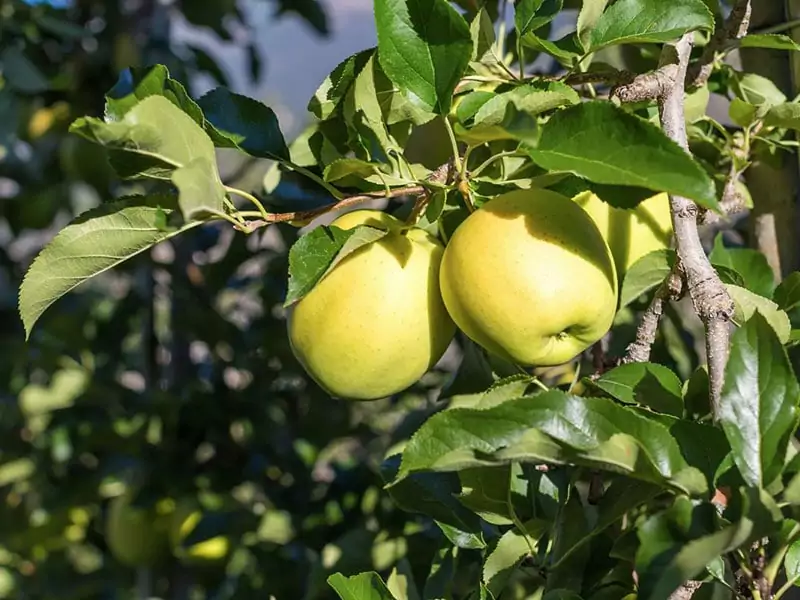
With banana-like fragrance and a dash of acidity, Mila Delicious Pilafa Tripoleos apple truly lives up to its name. Don’t let the dark brown spots on their green-yellow skin fool you – that’s the marker of a true Pilafa.
Ilias Andreou Pilafas brought these apple seeds from America back in the 1920s, planting them in his Arcadian garden. Their juicy, white flesh is firm yet succulent, providing a vitamin-rich, health-giving snack.
Hand-harvested only when ripe, these fruits don’t just charm with their taste; they’re also applauded for their longevity and resistance.
44. Aktinidio Sperchiou (Kiwi)

The Aktinidio Sperchiou is a distinctive kiwi species, rooted in the fertile soil of the Spercheios River valley, a region in Phthiotis, Greece. It loves the region’s hot climate and generous rainfall.
Unwrapping the easily peeled brown skin reveals juicy pulp, delicately scented and harmonizing sweet and sour taste. I’ve tried adding them into some recipes with kiwi, like fruit salads and blending them into wholesome smoothies. Combined with Greek yogurt, they offer a feast of textures.
Though they may lack popularity due to higher pricing and less promotion, their distinct character deserves applause.
45. Syka Vavronas Markopoulou Messongion (Black Figs)
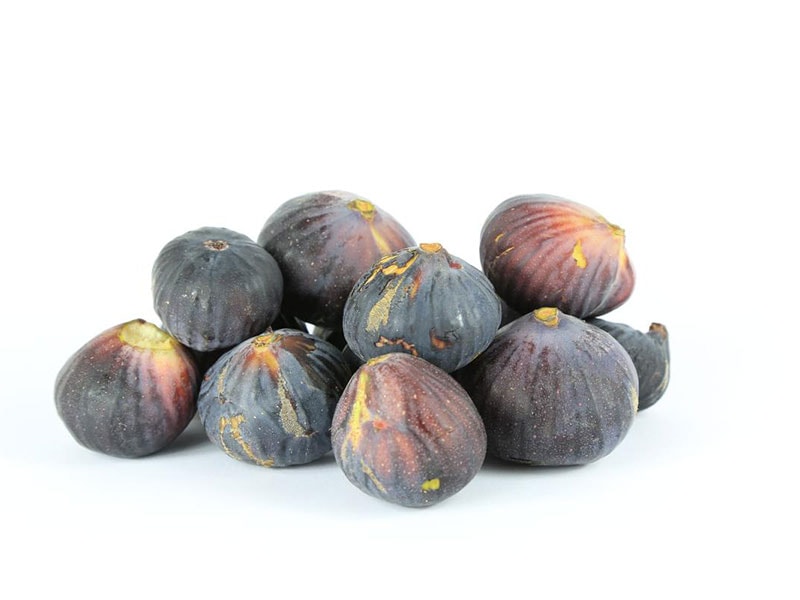
Syka Vavronas Markopoulou Messogion figs are a luxurious product of Attica’s Markopoulo Mesogion municipality. It was brought to life by the fusion of the Vasilika Mavra and Mavra Markopoulo varieties.
Famed as Greece’s finest, Vasilika Mavra flaunts a dark burgundy skin, ready for harvest between August and September. Meanwhile, Mavra Markopoulo, distinguishable by its black peel, ripens from mid-August until November.
Both varieties are a feast for the senses – pear-shaped, succulent, and extremely fleshy, with an irresistible sweetness. Legend has it that Syka Vavronas Markopoulou Messongion were so flavorful that Persian King Xerxes once attempted to conquer Greece to claim them.
As late summer arrives, these figs appear in Greek supermarkets and street markets. They are ready to be savored fresh or transformed into delicious fig jam. To enjoy fresh, gently wash them under cool water and pat them dry. Then, remove the stem and slice the fig in half or keep it whole.
46. Xera Syka Kymis (Kymi Dried Figs)
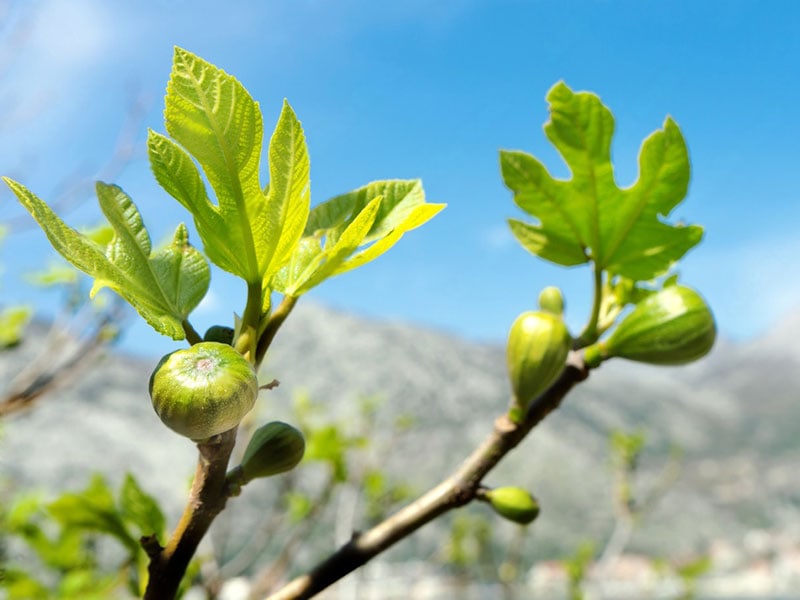
In the municipality of Kymi on Evia island, the making of Xera Syka Kymis, large dried figs, is a delicate process. Here, the Traganika variety figs are grown and nurtured with organic fertilizers, free from pesticides.
These figs ripen from August to September’s end and don a pale green hue. Harvested at full ripeness, they find rest in wooden ‘telara’ baskets, before heading into special chambers for a sulfur vapor bath.
After being cut in half, they bask in the sun, drying naturally over four to five days. Each half is then reunited, forming a final product named ‘askada’. This isn’t the end, though – these gems are washed in hot water, cleaned, and left to dry for another day.
Once ready, their sweet charm is perfect for fig bars, jams, or fig honey dressings.
47. Koum Kouat Kerkyras (Corfu Kumquat)
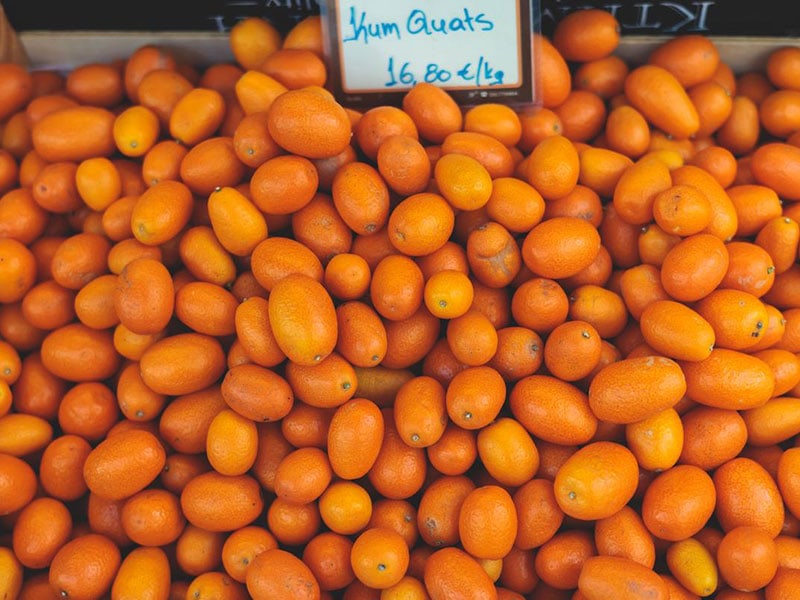
Corfu’s Koum Kouat Kerkyras started its journey in 19th-century China, and now it graces Corfu with its presence. These vibrant yellow, oblong, detect-free fruits come to life between January and May. Moreover, they’re carefully handpicked at the peak of ripeness.
Each part of the Koum Kouat is edible, from its sweet peel to its juicy flesh. For storing, a cool and dry place does the trick. With its stash of essential oils, vitamin C, fiber, minerals, and antioxidants, it’s a nutritional superstar that’s also low on calories.
Keep it cool and dry, and when you’re ready, enjoy it raw or as a zesty addition to cooking. It also works brilliantly in making kumquat liqueur, offering a spirited kick to vodka, brandy, or gin.
To enjoy kumquats, rinse them thoroughly and pat them dry. Unlike other citrus fruits, you can eat the entire kumquat, including the skin.
48. Firiki Piliou (Magnesia Apples)
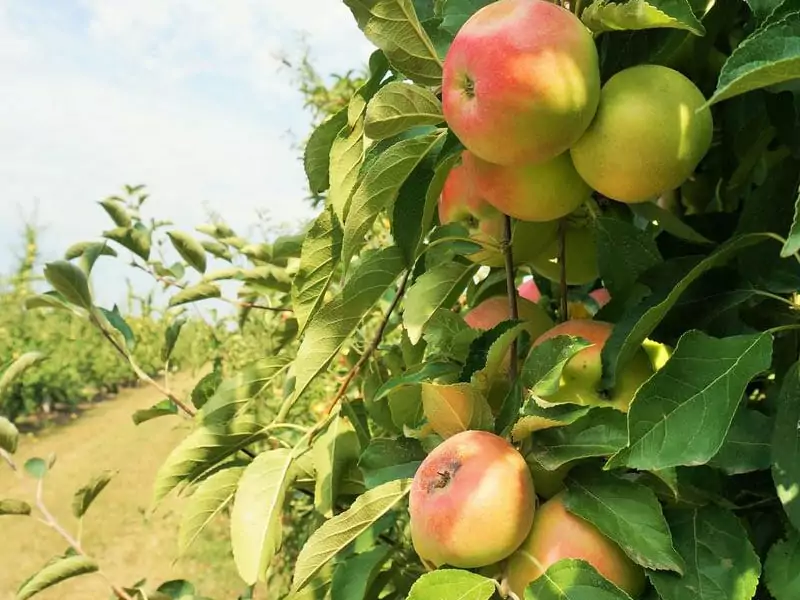
Firiki Piliou, petite apples of the species Malus domestica Borkh, trace their roots back to the Black Sea area, making their way to Greece in the 19th century.
With an elongated shape, they span a length of 5.5 to 7 inches and boast a yellowish-green color with reddish patches due to the sun. Remarkably sun-resilient, these apples grow on the hilly terrains of eastern mainland Greece, from Makrinitsa and Portaria to Miles and Mouresi.
The key to their pristine condition lies in careful handpicking, safeguarding them from bruises and preserving their stalks. Crisp and intensely fragrant, these firm-fleshed apples require no refrigeration.
Notably, they take center stage in the famous dessert, Glyko Koutaliou me Mila Firikio, relishing in their sweetness.
49. Mandarini Chiou (Mandarin)
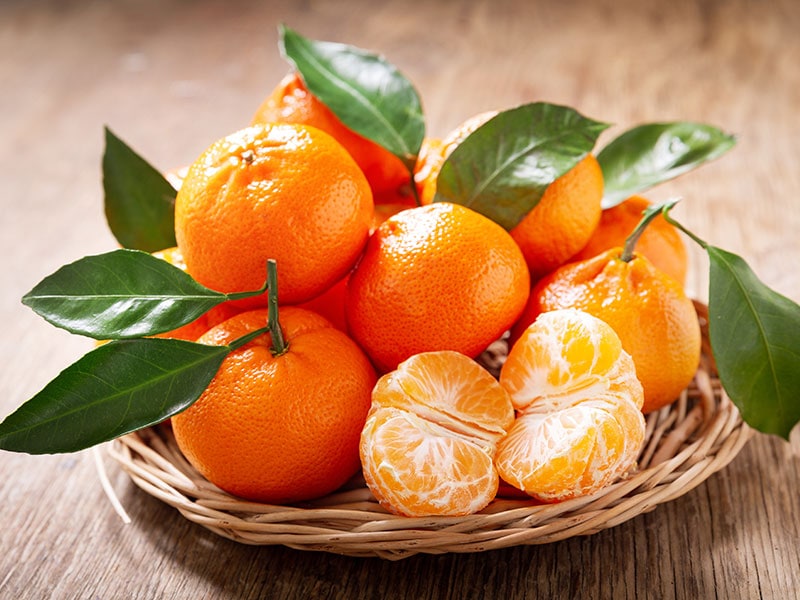
Mandarini Chiou, a mandarin celebrated for its high sugar content, blooms in Chios, a place lovingly known as ‘Myrovolos’ or the fragrant island, thanks to the intoxicating aroma of these citrus marvels.
Their tender, slightly orange flesh beneath a rough membrane teems with an intense aroma that emits even before ripening. Not only are they among the most aromatic in the world, but their scent permeates the entire citrus groves.
To ensure these tasty fruits retain their quality, Chios’ growers have mastered the art of paper-wrapping mandarins right after harvest.
50. Stafida Soultanina Kritis (Dried Grapes)
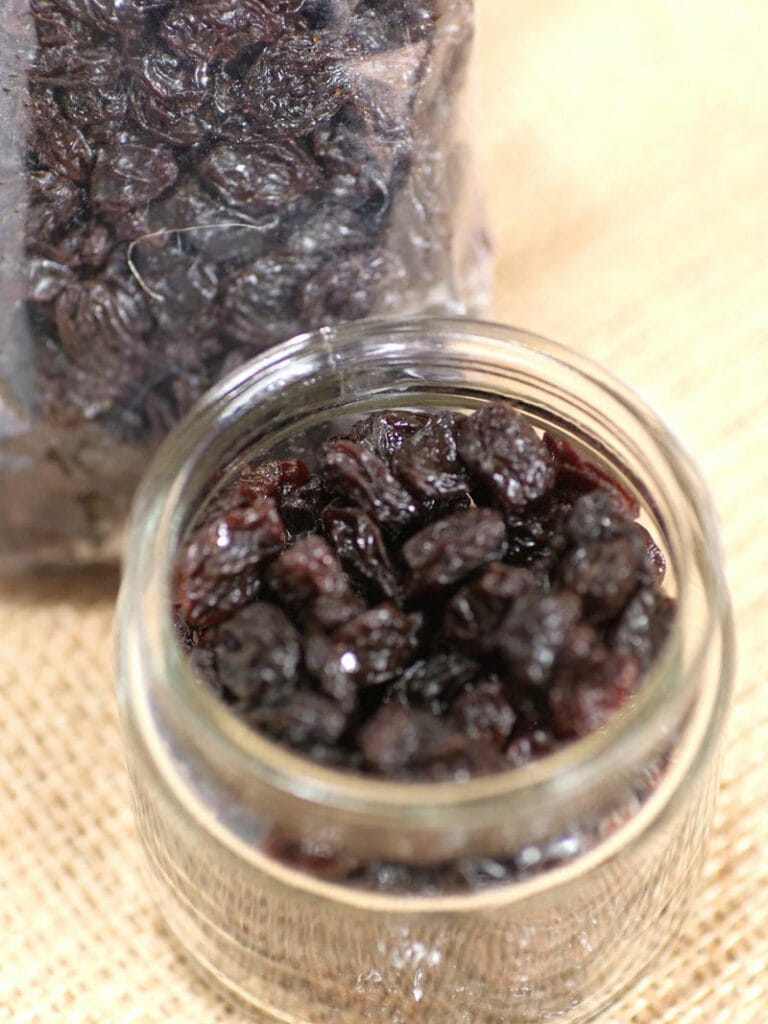
Stafida Soultanina Kritis are extraordinary raisins that owe their distinctive golden-brown hue to the special Sultanina grapes they are made from. These came to Crete from Asia Minor in the early 20th century, replacing local grape varieties.
Possessing a flavor profile similar to vanilla, these raisins achieve a high sugar concentration of at least 75% and a maximum moisture content of 16%. From mid-August to mid-September, grapes are picked and promptly dried.
Globally recognized, Stafida Soultanina Kritis has found a sweet spot in the preparation of cakes and desserts around the world.
51. Mila Zagoras Piliou Apples
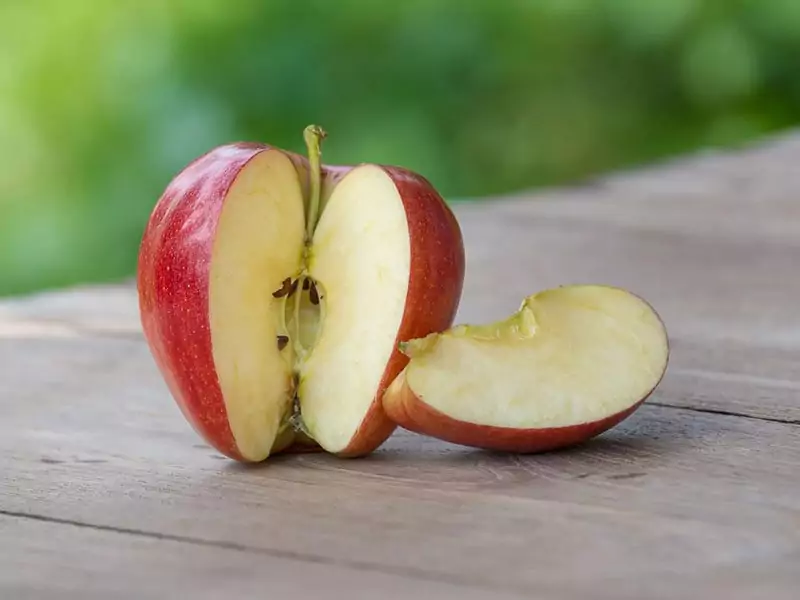
I’ve been lucky to taste the Mila Zagoras Piliou apples, a stellar creation from the Starking Delicious variety, nurtured on the eastern side of Pilios. Initiated in the 1960s by the Zagora Agricultural Cooperative, the growth takes place at a high altitude between 300-700 meters.
It has a characteristic oblong shape with five lobes at the bottom and an intense red color that contrasts beautifully with the yellowish-white, juicy pulp inside. The flavor is simply excellent, with a smooth and polished peel encasing it all.
52. Milo Kastorias (Kastoria Apples)
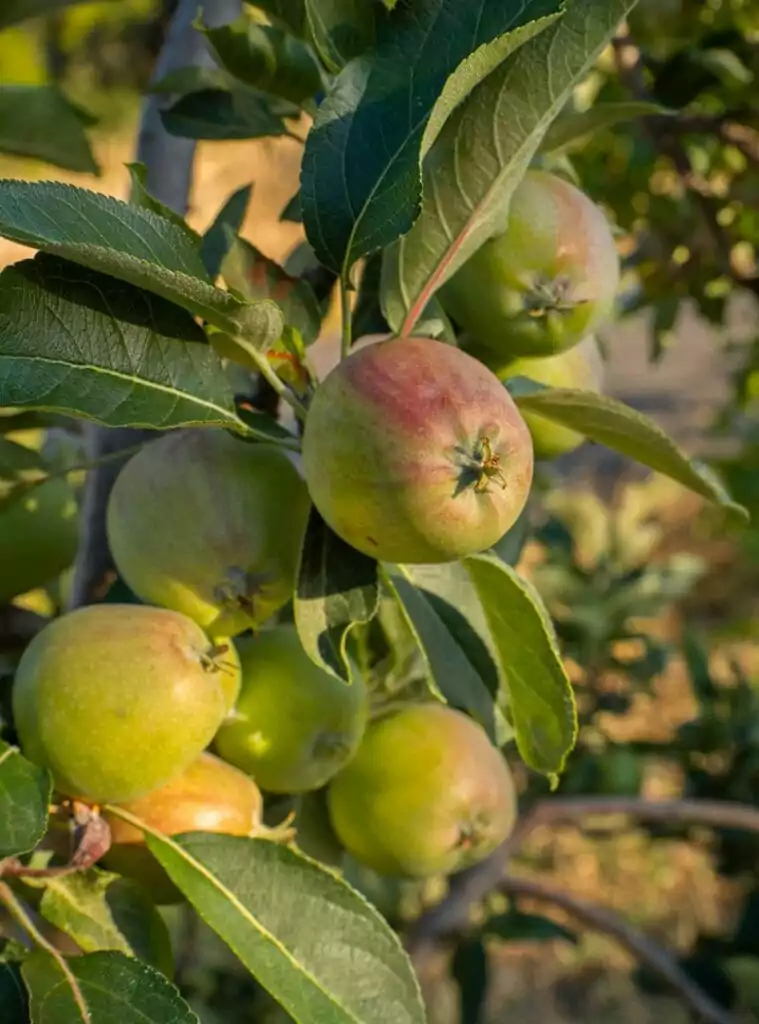
Milo Kastorias apples come from the Rosaceae family, specifically the Pomoideae sub-family, in Kastoria prefecture. They parade in vibrant red and yellow, including varieties such as Starking, IDR Delicious, Starkrimson, Red Chief, Golden Delicious, Jonagold, and Granny Smith.
Their flesh is meaty and juicy, offering a sweet taste with a hint of tartness. Harvesting season starts in late September, and these robust fruits can be stored until the following May or June.
They are well-loved locally and sought after in countries in the European Union, like Italy, Portugal, Germany, and the Netherlands. These apples make a great snack eaten raw or cooked into cider, juices, wine, liqueur, brandy, and vinegar.
53. Rodakina Naoussas (Naoussa Peaches)
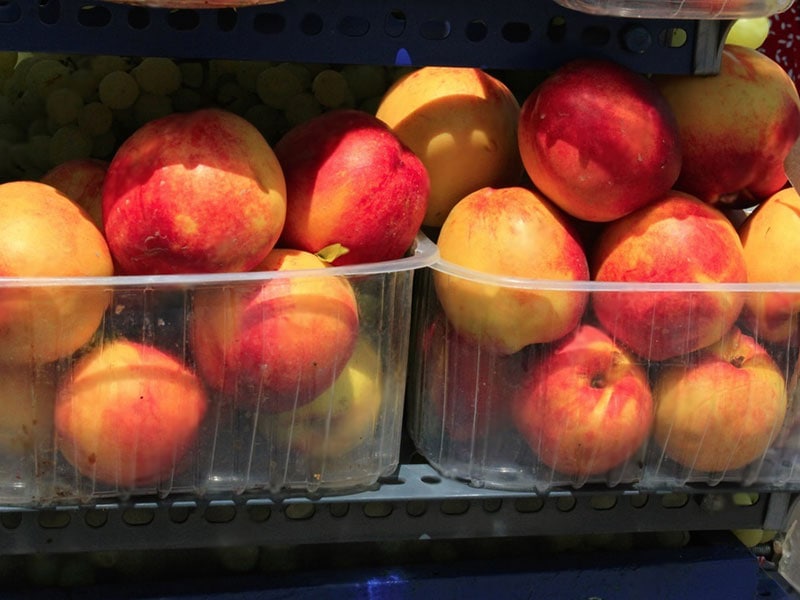
From the fertile lands of Central Macedonia, Greece, come the Rodakina Naoussas peaches. A rainbow of varieties are Maycrest, June Gold, Honey Dew Hale, and Loring. They paint a picture of this fruit’s diversity, all with roots tracing back to China.
These peaches have medium to large size, a dazzling red color, and a balance of juiciness and flavor. They are always harvested at the peak of ripeness, packed swiftly to preserve freshness, and sold from late May to October’s end. Their rich aroma and sweet taste are 100% satisfying.
Portugal
54. Cereja da Cova da Beira (Cova da Beira Cherries)
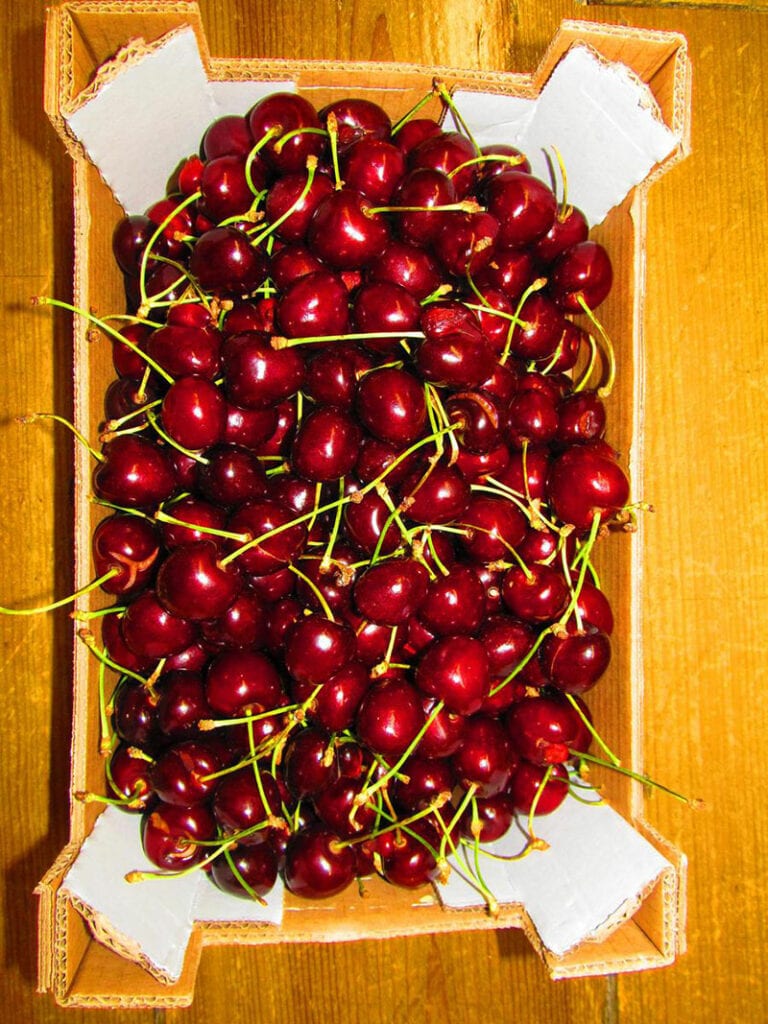
Cereja da Cova da Beira is a charming fruit in Portugal. These cherries are native to Fundão, Covilhã, and Belmonte in the Castelo Branco district. These bright to dark red beauties, coming from the Morangão and De Saco varieties, carry a unique sweetness.
They’ve been around since the 19th century, showcasing firm, dense textures with their thick, light green stalks. Fun fact – they’re popular wedding gifts as a fruit bouquet! I recommend eating these cherries fresh or including them in cakes and liqueurs.
55. Anona da Madeira (Portuguese Custard Apples)
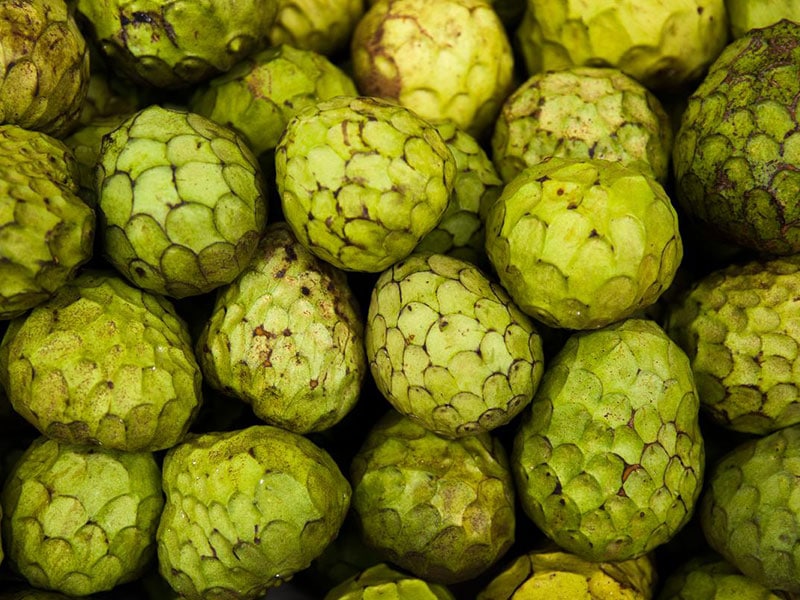
In the tropical paradise of Madeira Island, an artichoke look-alike thrives. This is the Anona da Madeira, a fruit of the Andes but a long-time resident of Madeira’s lush landscapes.
It hides a velvety, sweet white pulp under its light green skin, offering an enchanting mix of flavors – a little bit of banana, a hint of pineapple, and a touch of strawberry. With every bite, you’ll feel the centuries-old tradition of Madeira’s fruit cultivation tangibly present.
56. Maçã Bravo de Esmolfe (Esmolfe Apple)
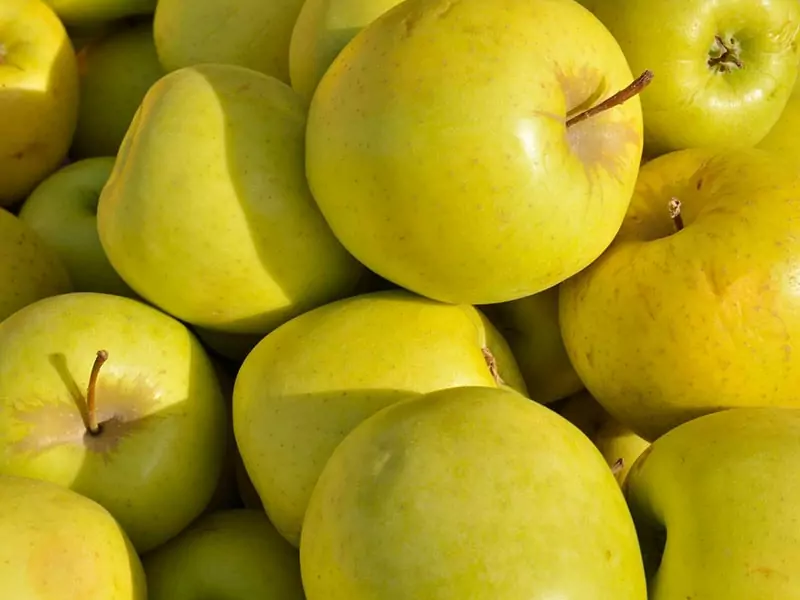
Maçã Bravo de Esmolfe, Portugal’s time-honored treasure from the fruitful districts of Coimbra, Viseu, Guarda, and Castelo Branco. These apple trees patiently wait three to four years to bear their exquisite gifts.
Each apple, with its white peel, playfully freckled with red spots, encloses a soft, sweet, and juicy flesh, often savored raw after a meal. Its intense fragrance not only indulges the senses while eating but also, when dried, infuses small spaces with a natural, pleasing aroma.
57. Maracujá dos Açores (São Miguel Passion Fruit)
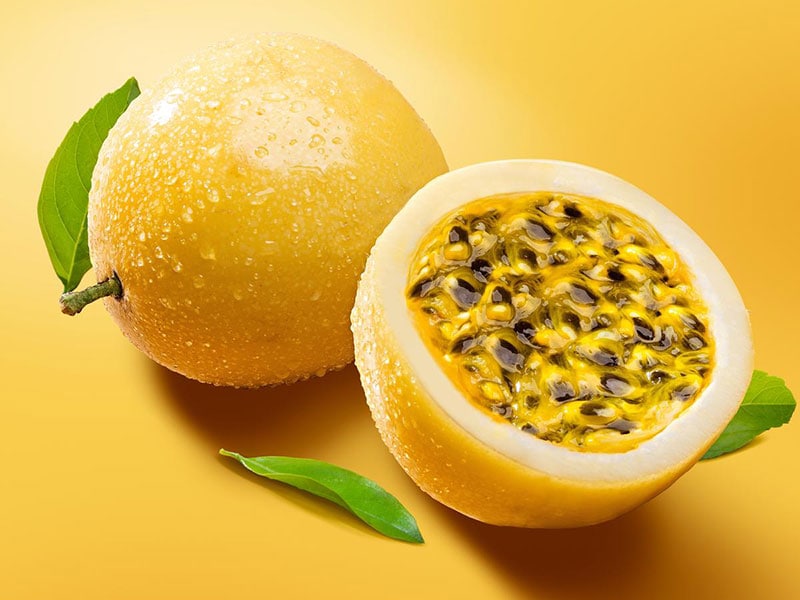
Maracujá dos Açores is also known as the São Miguel passion fruit. Originating from the red Passiflora species in the Azores, it’s distinguished by its hard, purple-hued, and rough skin, concealing a pulp that is yellow and juicy.
Within this pulp lie seeds, offering a slight sourness that balances the overall flavor. Cultivated carefully in light, fertile soil within greenhouses, these fruits are shielded from the wind.
With an aroma as intense as its flavor, this fruit is a key ingredient in desserts, fruit juices, and Azorean liqueurs, like Licor de Maracuja. They have two harvest seasons – from December to March, and again from July to October.
58. Citrinos do Algarve (Algarve Citrus Fruits)
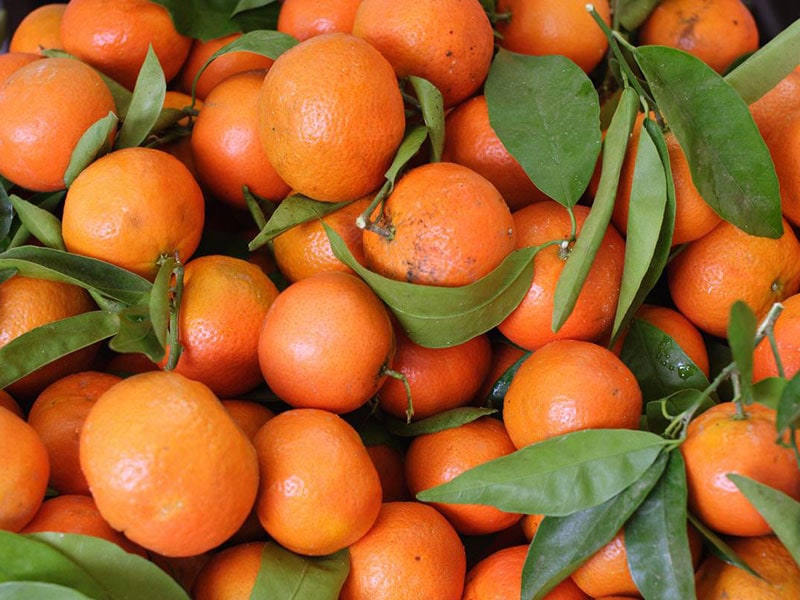
Citrinos do Algarve is a beautiful citrus selection from the Algarve region. The diverse array includes everything from grapefruits and oranges to tangerines, limes, and lemons. In the sprawling 16,000 hectares of Algarve, oranges, and tangerines prevail.
These citrus fruits burst with color and high juice content, their thin skin holding delicious refreshment. These fruits are versatile, either savored raw after meals, embraced as snacks, or transformed into juices, desserts, liqueurs, and jams.
Historically, they were a crucial part of the trade between the southern Iberian Peninsula, Genoese, and Portuguese, with China, Japan, and India.
59. Maçã de Alcobaça (Alcobaça Apples)
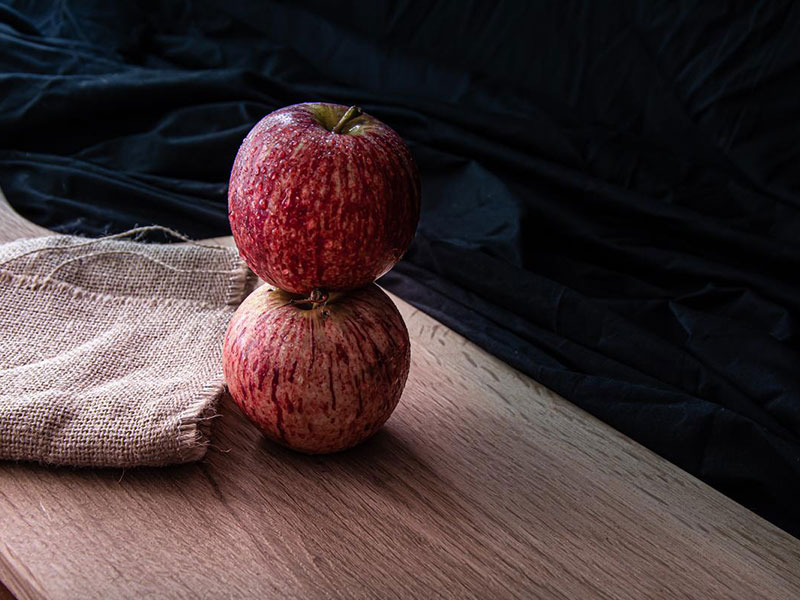
Maçã de Alcobaça isn’t just a single type of apple, it refers to multiple varieties like Fuji, Royal Gala, Jonagold, Red and Golden Delicious, Casanova de Alcobaça, Granny Smith, and Reineta Parda.
The apples are exceptional in their organoleptic qualities, boasting vivid colors and a shiny appeal. Red Delicious variety, for example, has a pineapple-like aroma with firm, white-colored flesh.
Fuji, on the other hand, enchants with its very sweet flavor, fragrant aroma, and greenish-white flesh. Casanova and Granny Smith come with white flesh and a sweet, pleasant taste. And let’s not forget Jonagold, Golden, and Reineta, charming with their flavorful, bittersweet pulp.
60. Pêra Rocha (Portuguese Pears)
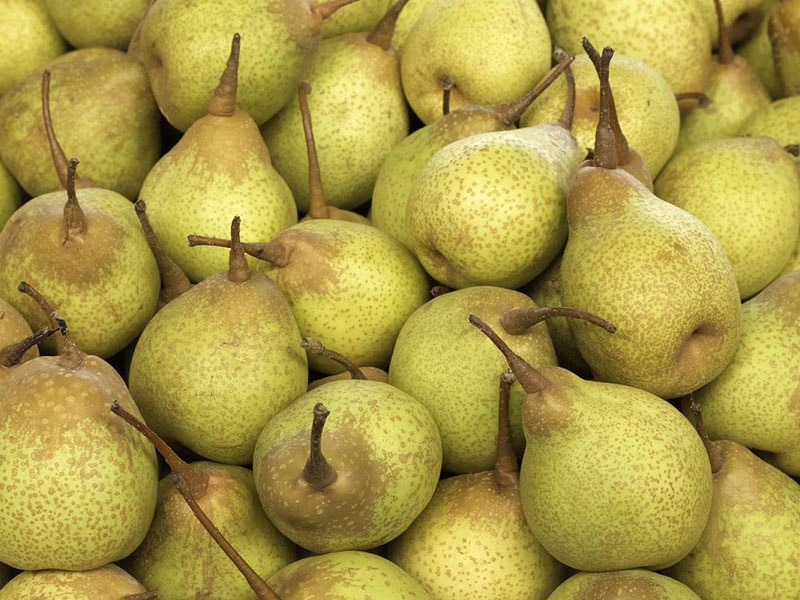
Pêra Rocha, which translates to “rock pear,” is a pear variety deeply rooted in Portuguese culture. Since its first recorded presence in 1836, this fruit has become a Portuguese treasure, grown widely across the country.
Its greenish-yellow skin hides a crisp, crunchy flesh inside. Over time, I have noticed that it evolves from its initial firmness into something softer, creamier, sweeter, and juicier.
61. Ananás dos Açores (São Miguel, Azorean Pineapple)
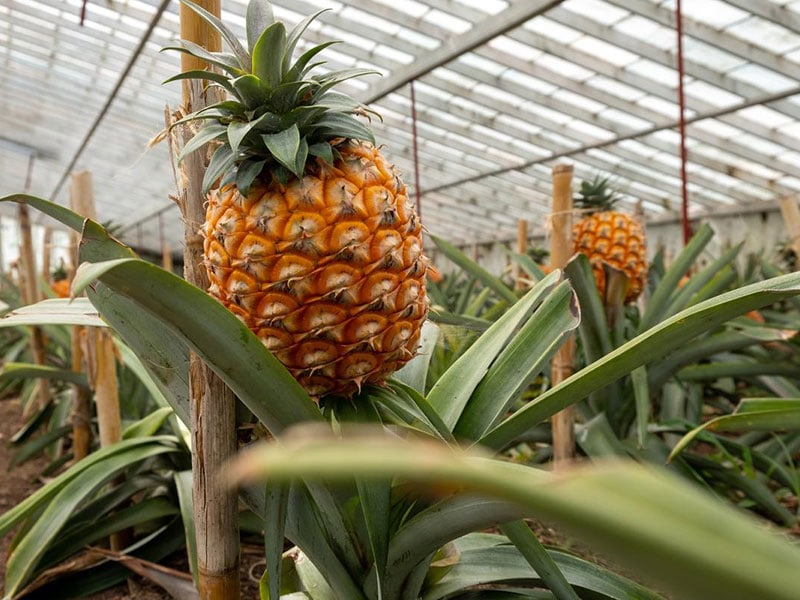
Ananás dos Açores, a pineapple of the Cayenne variety, has been cultivated in São Miguel, an island in the Portuguese Azores, since the 1840s. These radiant fruits, which take two full years to mature, are nurtured in over 6,000 glass greenhouses using time-honored techniques.
Once ready, they reveal a strikingly bright orange skin, coupled with yellow, almost translucent pulp and a modest crown hint. Your senses are sure to be intrigued by its unique bittersweet flavor and charming exotic aroma.
From sweet to savory dishes and the famous Piña colada cocktail, this fruit brightens up every culinary creation.
Czech Republic
62. Topaz Apples
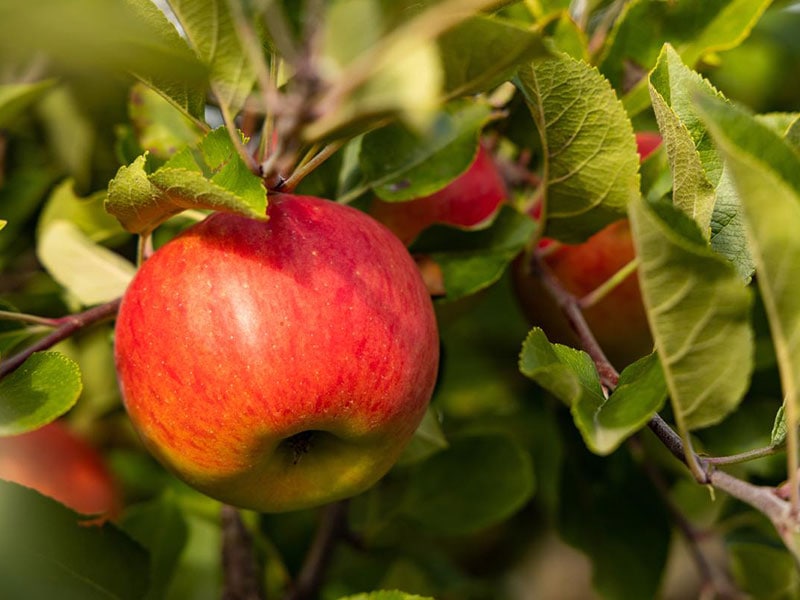
Topaz apples is a one-of-a-kind dessert apple variety born in the Czech Republic. They are a blend of Rubín and Vanda apples. These Czech-grown fruits exhibit a distinct, fairly sharp flavor that’s nicely balanced by their creamy white, firm, and crisp flesh.
They’re available from mid-fall through winter, making them perfect for holiday dishes. With their versatility, they’re fabulous raw in salads or paired with cheese and cream-based dips. If you prefer, they can be transformed through boiling, roasting, or baking.
As for me, I like utilizing these apples in both savory and sweet dishes, with each bite consistently offering that firm, refreshing crunch.
63. Opal Apples
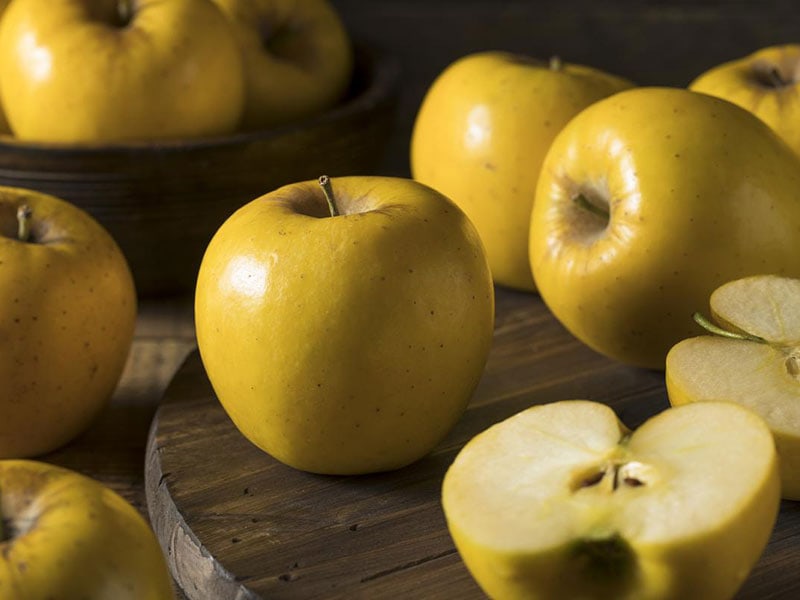
Opal apples, with the technical name ‘UEB 32642’, are a splendid fusion of ‘Golden Delicious’ and ‘Topaz’, birthed by the Institute of Experimental Botany in Prague. It’s cultivated by FirstFruits Farms LLC in Washington. FirstFruits Marketing is responsible for all the marketing aspects.
From Austria to the United Kingdom, they have made a global mark. Their signature yellow color gives way to a distinctively crunchy texture and a sweet, tangy flavor that I absolutely adore.
An intriguing characteristic of these apples is their naturally low polyphenol oxidase content, making them a prime choice for pre-sliced packaging.
Croatia
64. Neretvanska Mandarina (Mandarin)
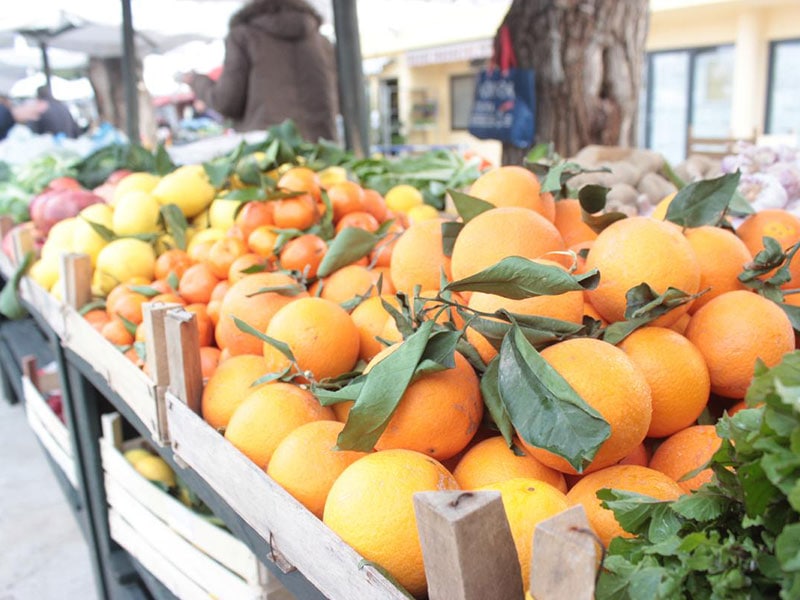
Neretvanska Mandarina is a vibrant orange citrus fruit, akin to a tangerine. It’s a proud member of the Unshiu-Satsuma group, hailing from the mandarin orange tree. All stages of its production occur within the beautiful Neretva River Valley, keeping its roots local and authentic.
Now, the Croatian-based fruits of the sweet, aromatic meat is quite striking – all thanks to the high carotenoid content. Segmentation is a key characteristic, with the fruit easily divided into bite-sized portions.
The balance between sweetness, tartness, and freshness, I must say, is exceptional. To achieve this, its sugar-to-acid ratio must be higher than 7:1.
65. Marasca Cherry / Maraschino Cherry
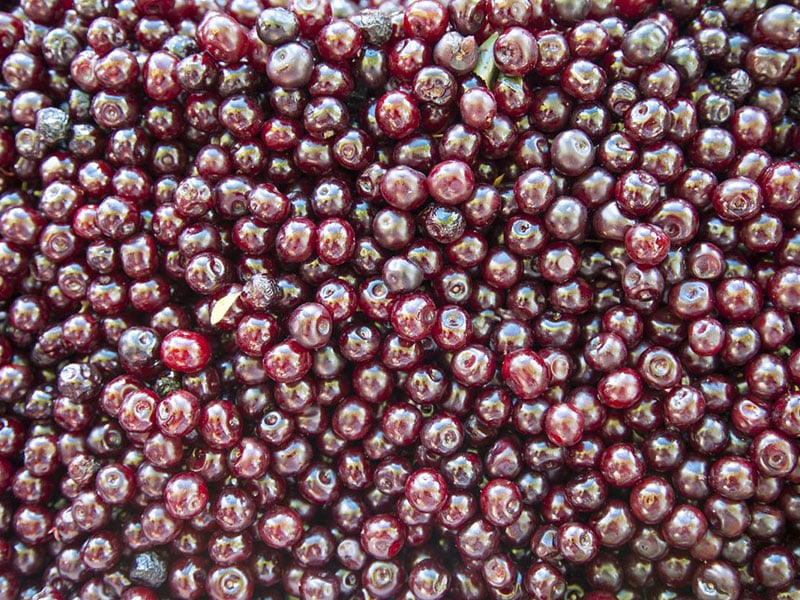
Maraschino cherries have roots in Dalmatia, with Zadar standing tall as the city with the largest yields. More specifically, they originate from the Marasca cherry, a sour Morello cherry known for its sour, slightly bitter taste.
This classic Morello cherry variety sports a petite size and a dark red to blackish hue that’s quite eye-catching. Desserts and Maraschino liqueurs owe a lot to these little wonders.
However, Maraschino cherries used in desserts and cocktails today are often not the same as the traditional Marasca cherries from Dalmatia. Those available in grocery stores are frequently made from other cherry varieties.
These products are pitted and then soaked in a sugar syrup, often along with other flavorings and preservatives. The bright red color of these cherries typically comes from food dye rather than the natural color of the fruit.
Regarding the nutritional content, Marasca cherries contain a significant amount of vitamins, minerals, and antioxidants. But the process of making Maraschino cherries, especially the commercial ones, often involves adding a lot of sugar and potentially removing some of the natural nutrients.
Hungary
66. Gönci Kajszibarack (Borsod-Abaúj-Zemplén County Apricot)

Gönci Kajszibarack apricots are something special. Blessed by the sunny climate, this fruit in Hungary blooms into distinct varieties, each with different shapes, sizes, and colors. Some well-known ones include Gonci Magyar Kajszi and Pannonia.
Traditional methods of cultivation, harvest, storage, and transportation make these apricots a cultural treasure. They’re ideal for munching raw or savoring in sweet recipes.
If you want to eat it fresh, remember to rinse the apricot under cool water and pat it dry. Next, cut the fruit in half along the natural seam and twist it to separate the two halves. Remove the pit and either eat the apricot as is or slice it into smaller pieces.
Poland
67. Jabłka łąckie (Polish Apples)
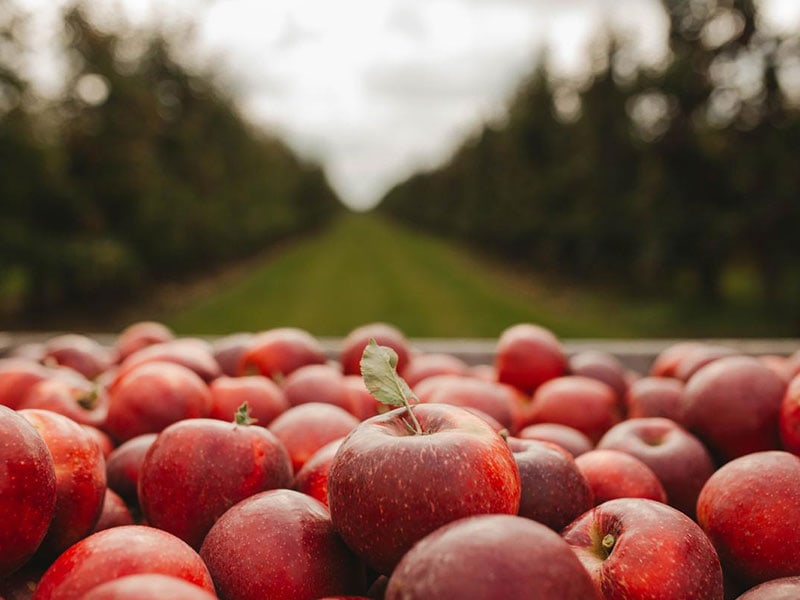
Poland’s Malopolskie Voivodship; specifically the municipalities of Lacko, Podegrodzie, Stary Sącz, and Lukowica, is home to Jabłka łąckie, fifteen varieties of apples.
The distinctive climate and compact soils of these regions assist in creating a Polish-grown fruit with an intense blush, firmer than your average apple. Jabłka łąckie boasts strong characters: the tart, aromatic taste, high acidity, and sourness make it an unforgettable treat.
68. Wiśnia Nadwiślanka (Lublin Voivodeship Cherry)
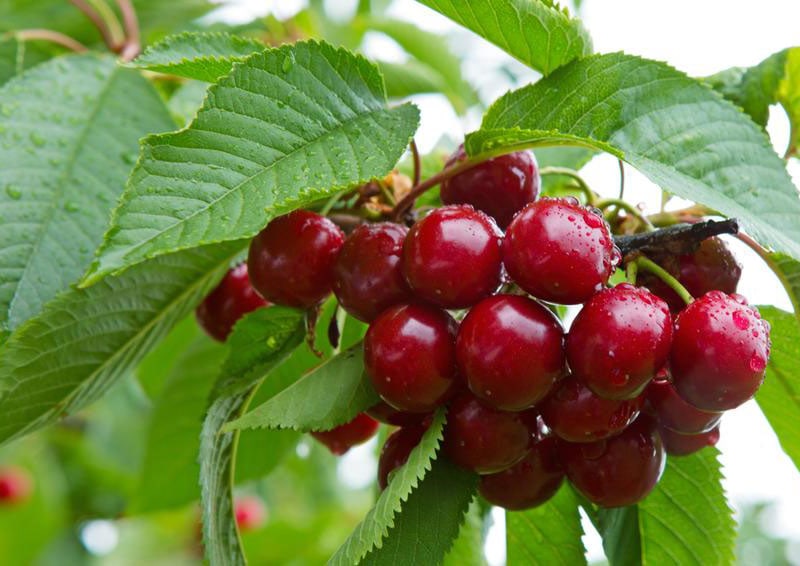
Mazowieckie, Świętokrzyskie and Lubelskie Voivodships in Poland nurture a special fruit – the Wiśnia Nadwiślanka. This cherry, small and round, brings a burst of intense aromas, an incredible sight with its deep red to burgundy skin and red flesh.
Its iconic color, thanks to the high anthocyanin content, carries more than beauty – it is known to fight against carcinogens. Perfect for direct consumption or processing, it’s been an integral part of Polish fruit culture since the 20th century.
69. Truskawka Kaszubska (Pomeranian Voivodeship Strawberries)
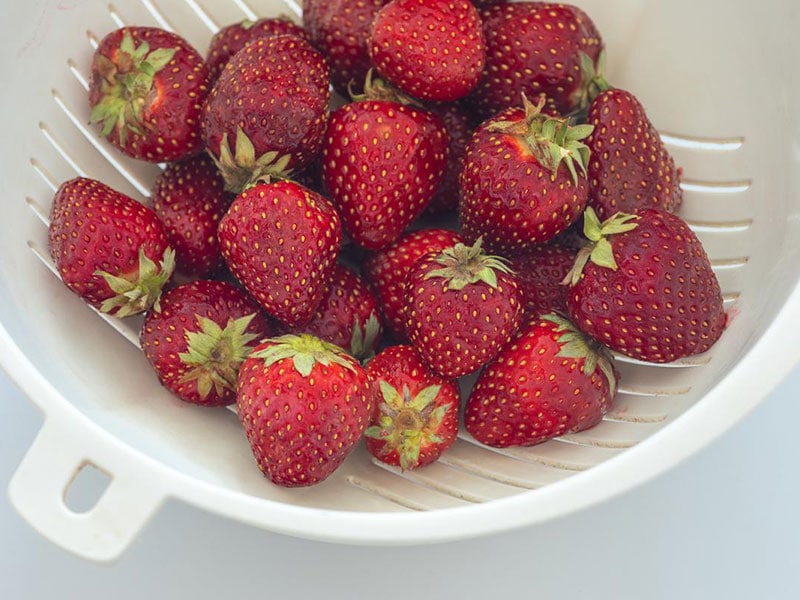
Truskawka Kaszubska, or Kaszëbskô Malëna, are wonderful strawberries that have found their home in the Kartuski, Kościerski, and Bytowski districts of Poland.
The Truskawka Kaszubska is known for three principal varieties – Elsanta, Honeoye, and Senga Sengana. All are celebrated for their heightened sweetness, containing more sugar than most other strawberry varieties.
Elsanta and Honeoye are the varieties of choice for those who love eating fresh strawberries. These strawberries are visually enticing, with a light to intense red color. They are small and round, with juicy, sweet, and firm flesh.
On the other hand, the Senga Sengana variety is usually destined for processing. These strawberries are renowned for their firm, juicy, and hard flesh that stands up well to various cooking methods.
They come in an assortment of sizes and shapes. An added convenience with this variety is that the stem can be easily removed when the strawberries are ripe.
Whether used as a garnish on a decadent pastry, baked into a fluffy cake or simply served alongside a scoop of creamy ice cream, these strawberries add an extraordinary touch!
Austria
70. Wachauer Marille (Wachau Apricot)
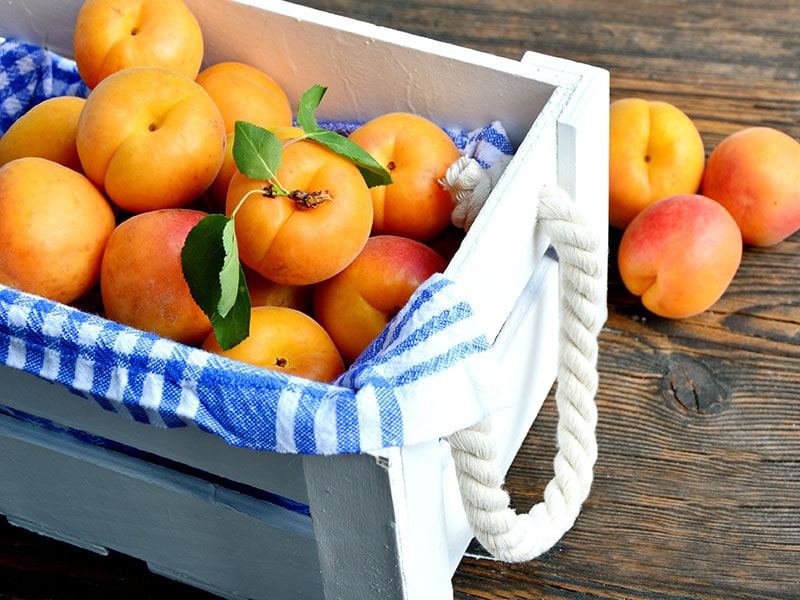
Wachauer Marille is a special apricot grown on the picturesque banks of the Danube River in the Wachau Valley. And the beauty of these Austrian fruits lies in their ripening process.
See, the dramatic temperature shifts from day to night create a flavor that’s a mix of sweet and slightly tart. And their rich, yellow-orange hue is a feast for the eyes. They even carry a special seal of quality, a testament to their exceptional aroma and flavor.
Celebrated in July at the Spitzer Marillenkirtag festival, these plump beauties also transform into delectable syrups, nectars, jams, preserves, liquors, and schnapps. Believe it or not, people can also use Wachau apricot to make even apricot beer!
Armenia
71. Nur (Armenian Pomegranate)
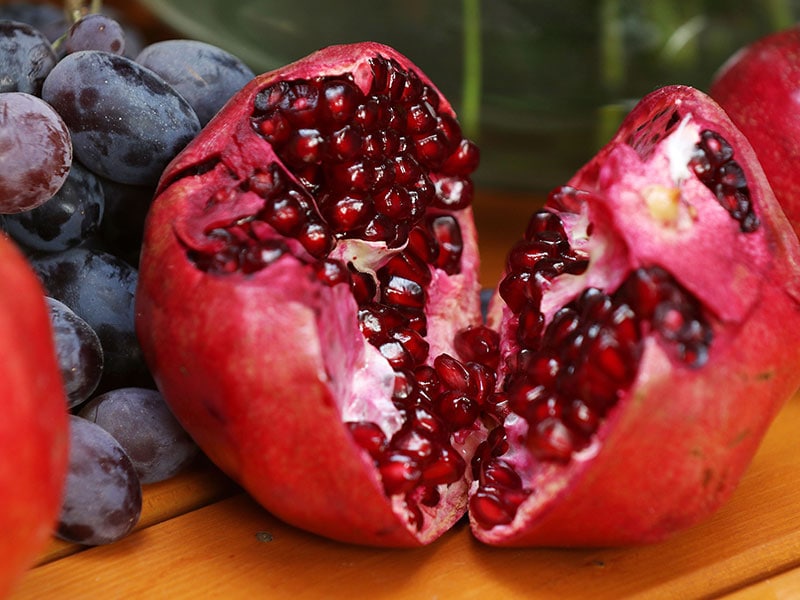
The “Nur” pomegranate, translated from Latin as “granular,” is an incredible fruit of Armenian. It is a powerhouse of vitamins, minerals, and trace elements. Just one of these can provide 40% of your daily needs for vitamins C, among other nutrients [5].
With each pomegranate housing anywhere from 400 to 1,200 seeds, Armenians believe each seed represents a day of the year. Encased in a thin, white or yellowish flesh membrane, these seeds carry a rich cultural significance too.
For instance, in Western Armenia, the bride at a wedding breaks a Nur into pieces, scattering the seeds. It’s a heartwarming symbol, denoting the bride’s future children.
72. Armenian Apricot
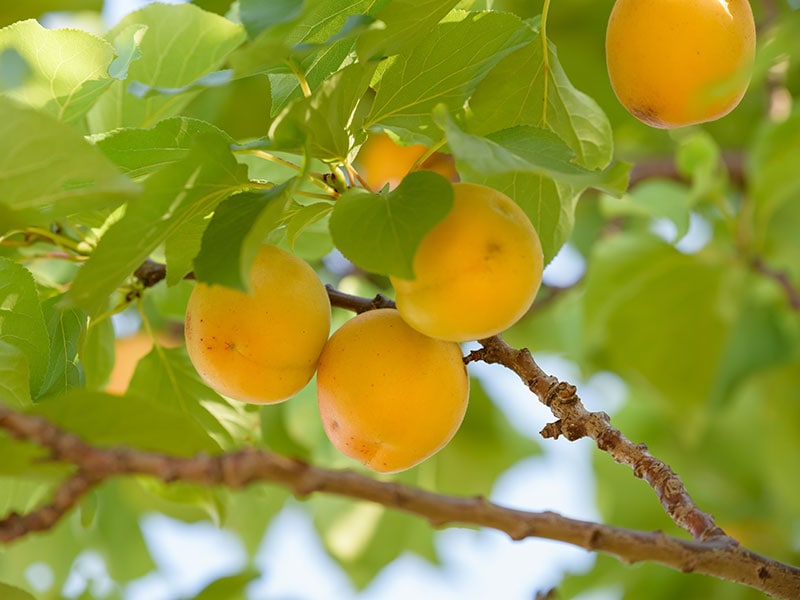
Proudly dubbed “the golden fruit of Armenia,” the Armenian apricot, or Tsiran, echoes the name of unique ornaments once worn by Armenian kings and knights.
Its reign continues in the Ararat Valley and the Meghri region, where it thrives thanks to the volcanic soil, sunshine, and mild climate. Biting into the soft, juicy pulp, you’re greeted by a honey-like sweetness and a pleasing aroma, all hidden under velvety skin.
This yellowish-orange spectacle, known as Tsiranaguyn in Armenian, also cradles an edible kernel within its stone. As a national treasure, it has a festival in its honor every July in the country’s capital. You can enjoy the fruit fresh or dried.
Belgium
73. D’Anjou Pear – Belgium
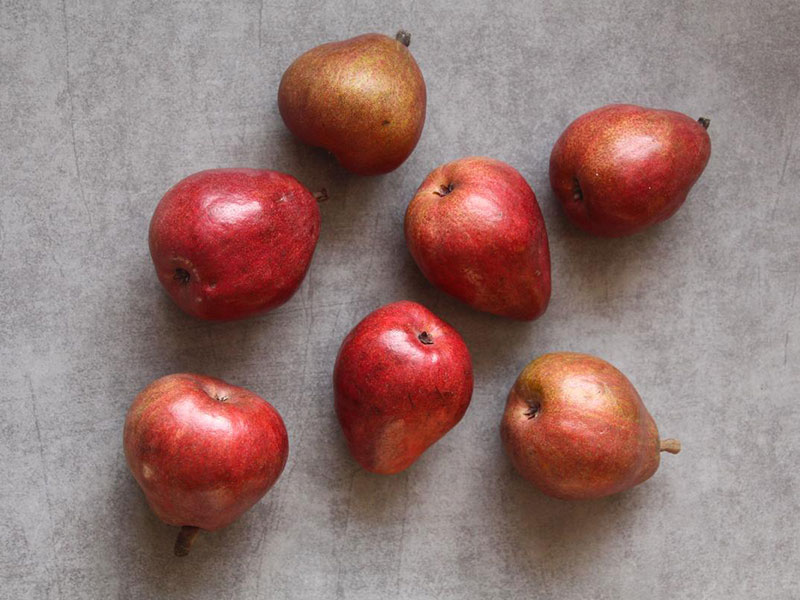
D’Anjou pear, or simply Anjou, is a juicy cultivar of European pear with a short neck. Originally called ‘Nec Plus Meuris’ in Europe, the name ‘Anjou’ somehow tagged along when it crossed into America and England in the mid-19th century from its birthplace, possibly Belgium or France.
Now, don’t be fooled by its pale green skin. This Belgian fruit product doesn’t change color when ripe, although there is a red variant too. Its medium to large size is a deceptively humble casing for the subtle sweetness inside, offering a refreshing lemon-lime flavor that lingers on the taste buds.
FAQs
A “Fruit-full” Journey Through Europe!
Through this exploration, you have become enamored with the luscious landscape of European fruits. These tantalizing fruits tell the rich, varied story of Europe’s heritage, all while serving as a testament to the continent’s fertile soils.
I encourage you to engage further with this topic. Spread the charm of these fruits by liking and sharing this article, and let’s deepen the dialogue by commenting on your favorites. See you in future posts!
References
- Olive trees cover 4.6 million hectares in the EU (2023). ec.europa.eu.
- How Vitamin C Supports a Healthy Immune System (2022). eatright.org.
- Phosphorus in diet (2023). medlineplus.gov.
- 6 Unique Benefits of Black Grapes (2022). eatright.org.
- Pomegranate Health Benefits (2021).linkedin.com.


